Quick filters:
Tyrant of syracuse Stock Photos and Images
 Dionysios I, circa 430 - 367 BC, Tyrant of Syracuse 405 - 367, portrait, copper engraving, 18th century, , Artist's Copyright has not to be cleared Stock Photohttps://www.alamy.com/image-license-details/?v=1https://www.alamy.com/stock-photo-dionysios-i-circa-430-367-bc-tyrant-of-syracuse-405-367-portrait-copper-19749475.html
Dionysios I, circa 430 - 367 BC, Tyrant of Syracuse 405 - 367, portrait, copper engraving, 18th century, , Artist's Copyright has not to be cleared Stock Photohttps://www.alamy.com/image-license-details/?v=1https://www.alamy.com/stock-photo-dionysios-i-circa-430-367-bc-tyrant-of-syracuse-405-367-portrait-copper-19749475.htmlRMB43JJB–Dionysios I, circa 430 - 367 BC, Tyrant of Syracuse 405 - 367, portrait, copper engraving, 18th century, , Artist's Copyright has not to be cleared
 Marble head statue of Hiero, tyrant of Syracuse Stock Photohttps://www.alamy.com/image-license-details/?v=1https://www.alamy.com/stock-image-marble-head-statue-of-hiero-tyrant-of-syracuse-164932086.html
Marble head statue of Hiero, tyrant of Syracuse Stock Photohttps://www.alamy.com/image-license-details/?v=1https://www.alamy.com/stock-image-marble-head-statue-of-hiero-tyrant-of-syracuse-164932086.htmlRMKG98FJ–Marble head statue of Hiero, tyrant of Syracuse
 Dion of Syracuse (408-354 B.C). Tyrant of Syracuse in Sicily (357-354 B.C.). Portrait. Engraving. 16th century. Stock Photohttps://www.alamy.com/image-license-details/?v=1https://www.alamy.com/stock-photo-dion-of-syracuse-408-354-bc-tyrant-of-syracuse-in-sicily-357-354-bc-133540277.html
Dion of Syracuse (408-354 B.C). Tyrant of Syracuse in Sicily (357-354 B.C.). Portrait. Engraving. 16th century. Stock Photohttps://www.alamy.com/image-license-details/?v=1https://www.alamy.com/stock-photo-dion-of-syracuse-408-354-bc-tyrant-of-syracuse-in-sicily-357-354-bc-133540277.htmlRMHN77YH–Dion of Syracuse (408-354 B.C). Tyrant of Syracuse in Sicily (357-354 B.C.). Portrait. Engraving. 16th century.
 Hiero II, circa 306 - 215 BC, Tyrant of Syracuse 269+ - 215 BS, portrait, wood engravign after ancient coin, , Stock Photohttps://www.alamy.com/image-license-details/?v=1https://www.alamy.com/stock-photo-hiero-ii-circa-306-215-bc-tyrant-of-syracuse-269-215-bs-portrait-wood-19800701.html
Hiero II, circa 306 - 215 BC, Tyrant of Syracuse 269+ - 215 BS, portrait, wood engravign after ancient coin, , Stock Photohttps://www.alamy.com/image-license-details/?v=1https://www.alamy.com/stock-photo-hiero-ii-circa-306-215-bc-tyrant-of-syracuse-269-215-bs-portrait-wood-19800701.htmlRMB45YYW–Hiero II, circa 306 - 215 BC, Tyrant of Syracuse 269+ - 215 BS, portrait, wood engravign after ancient coin, ,
 Dion of Syracuse (408-354 B.C). Tyrant of Syracuse in Sicily (357-354 B.C.). Portrait. Engraving. 16th century. Colored. Stock Photohttps://www.alamy.com/image-license-details/?v=1https://www.alamy.com/stock-photo-dion-of-syracuse-408-354-bc-tyrant-of-syracuse-in-sicily-357-354-bc-133862320.html
Dion of Syracuse (408-354 B.C). Tyrant of Syracuse in Sicily (357-354 B.C.). Portrait. Engraving. 16th century. Colored. Stock Photohttps://www.alamy.com/image-license-details/?v=1https://www.alamy.com/stock-photo-dion-of-syracuse-408-354-bc-tyrant-of-syracuse-in-sicily-357-354-bc-133862320.htmlRMHNNXN4–Dion of Syracuse (408-354 B.C). Tyrant of Syracuse in Sicily (357-354 B.C.). Portrait. Engraving. 16th century. Colored.
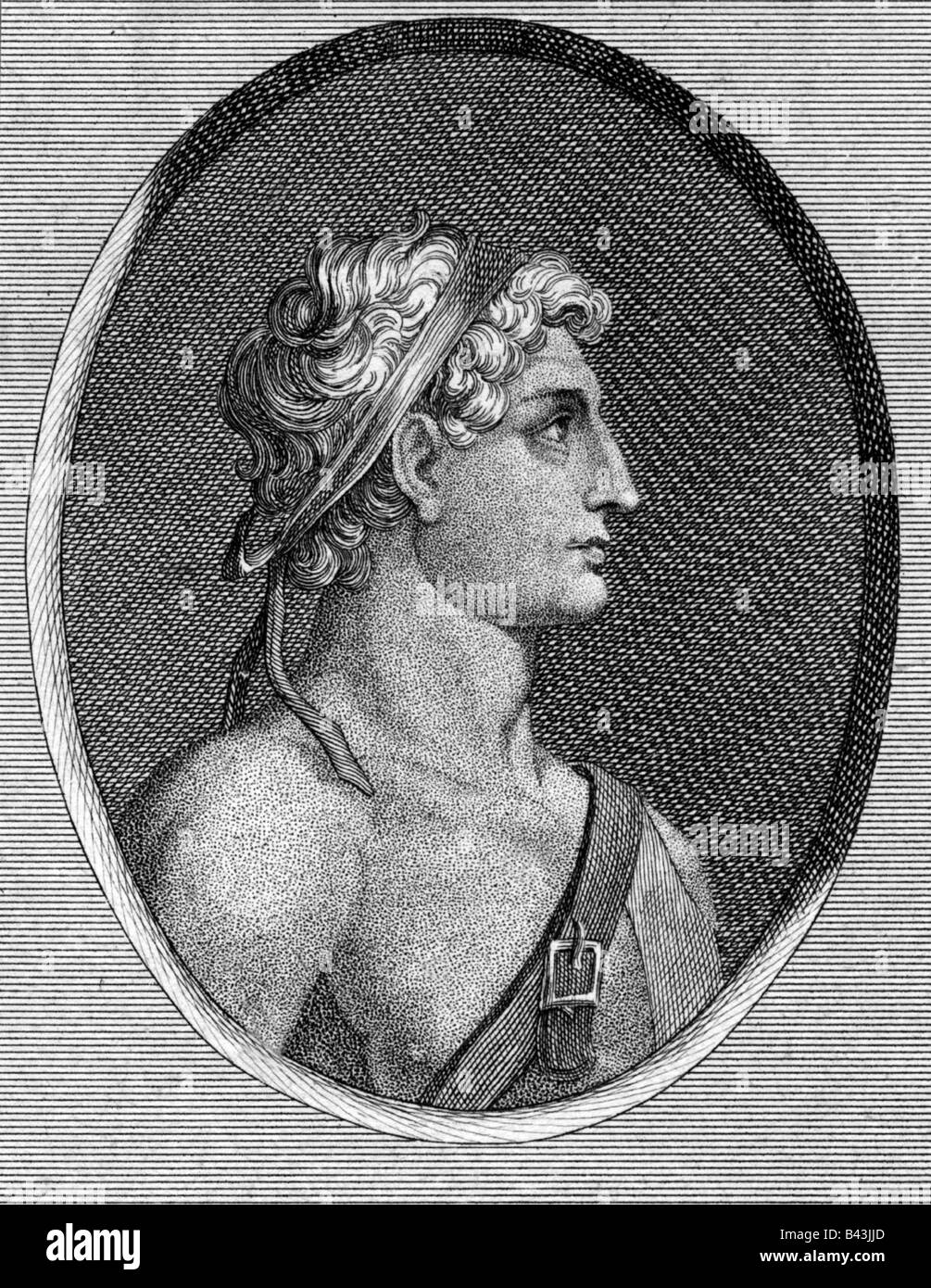 Gelo, circa 540 - 478 BC, Tyrant of Syracuse 485 - 478, portrait, copper engraving, 18th century, , Artist's Copyright has not to be cleared Stock Photohttps://www.alamy.com/image-license-details/?v=1https://www.alamy.com/stock-photo-gelo-circa-540-478-bc-tyrant-of-syracuse-485-478-portrait-copper-engraving-19749477.html
Gelo, circa 540 - 478 BC, Tyrant of Syracuse 485 - 478, portrait, copper engraving, 18th century, , Artist's Copyright has not to be cleared Stock Photohttps://www.alamy.com/image-license-details/?v=1https://www.alamy.com/stock-photo-gelo-circa-540-478-bc-tyrant-of-syracuse-485-478-portrait-copper-engraving-19749477.htmlRMB43JJD–Gelo, circa 540 - 478 BC, Tyrant of Syracuse 485 - 478, portrait, copper engraving, 18th century, , Artist's Copyright has not to be cleared
 Timoleon c. 411-337 BC, a Greek statesman and general at Syracuse with the dead Hicetas, a Syracusan general and tyrant of LeontiniTimoleon c. 411-337 Stock Photohttps://www.alamy.com/image-license-details/?v=1https://www.alamy.com/stock-photo-timoleon-c-411-337-bc-a-greek-statesman-and-general-at-syracuse-with-143681053.html
Timoleon c. 411-337 BC, a Greek statesman and general at Syracuse with the dead Hicetas, a Syracusan general and tyrant of LeontiniTimoleon c. 411-337 Stock Photohttps://www.alamy.com/image-license-details/?v=1https://www.alamy.com/stock-photo-timoleon-c-411-337-bc-a-greek-statesman-and-general-at-syracuse-with-143681053.htmlRMJ9N6J5–Timoleon c. 411-337 BC, a Greek statesman and general at Syracuse with the dead Hicetas, a Syracusan general and tyrant of LeontiniTimoleon c. 411-337
 Dionysius, tyrant of Syracuse and his daughters removing his beard. Stock Photohttps://www.alamy.com/image-license-details/?v=1https://www.alamy.com/dionysius-tyrant-of-syracuse-and-his-daughters-removing-his-beard-image186173527.html
Dionysius, tyrant of Syracuse and his daughters removing his beard. Stock Photohttps://www.alamy.com/image-license-details/?v=1https://www.alamy.com/dionysius-tyrant-of-syracuse-and-his-daughters-removing-his-beard-image186173527.htmlRMMPTX6F–Dionysius, tyrant of Syracuse and his daughters removing his beard.
RM2T69538–Hiero II, Greek tyrant of Syracuse, Sicily, from 275 to 215 BC. Former general of Pyrrhus of Epirus and important figure of the First Punic War. Head of a young man in laurel crown. Hierone. Copperplate engraving by Etienne Picart after Giovanni Angelo Canini from Iconografia, cioe disegni d'imagini de famosissimi monarchi, regi, filososi, poeti ed oratori dell' Antichita, Drawings of images of famous monarchs, kings, philosophers, poets and orators of Antiquity, Ignatio deLazari, Rome, 1699.
RM2P73870–Hiero II, Greek tyrant of Syracuse, Sicily, from 275 to 215 BC. Former general of Pyrrhus of Epirus and important figure of the First Punic War. Head of a young man in laurel crown. Hierone. Copperplate engraving by Etienne Picart after Giovanni Angelo Canini from Iconografia, cioe disegni d'imagini de famosissimi monarchi, regi, filososi, poeti ed oratori dell' Antichita, Drawings of images of famous monarchs, kings, philosophers, poets and orators of Antiquity, Ignatio de’Lazari, Rome, 1699.
 . English: Dionysius Tyrant of Syracuse Italiano: Dionisio Tiranno di Siracusa Dionisio Tiranno di Siracusa Stock Photohttps://www.alamy.com/image-license-details/?v=1https://www.alamy.com/english-dionysius-tyrant-of-syracuse-italiano-dionisio-tiranno-di-siracusa-dionisio-tiranno-di-siracusa-image184970080.html
. English: Dionysius Tyrant of Syracuse Italiano: Dionisio Tiranno di Siracusa Dionisio Tiranno di Siracusa Stock Photohttps://www.alamy.com/image-license-details/?v=1https://www.alamy.com/english-dionysius-tyrant-of-syracuse-italiano-dionisio-tiranno-di-siracusa-dionisio-tiranno-di-siracusa-image184970080.htmlRMMMX368–. English: Dionysius Tyrant of Syracuse Italiano: Dionisio Tiranno di Siracusa Dionisio Tiranno di Siracusa
 Hiero Ii Syracuse Eng Stock Photohttps://www.alamy.com/image-license-details/?v=1https://www.alamy.com/hiero-ii-syracuse-eng-image6078476.html
Hiero Ii Syracuse Eng Stock Photohttps://www.alamy.com/image-license-details/?v=1https://www.alamy.com/hiero-ii-syracuse-eng-image6078476.htmlRMA319MD–Hiero Ii Syracuse Eng
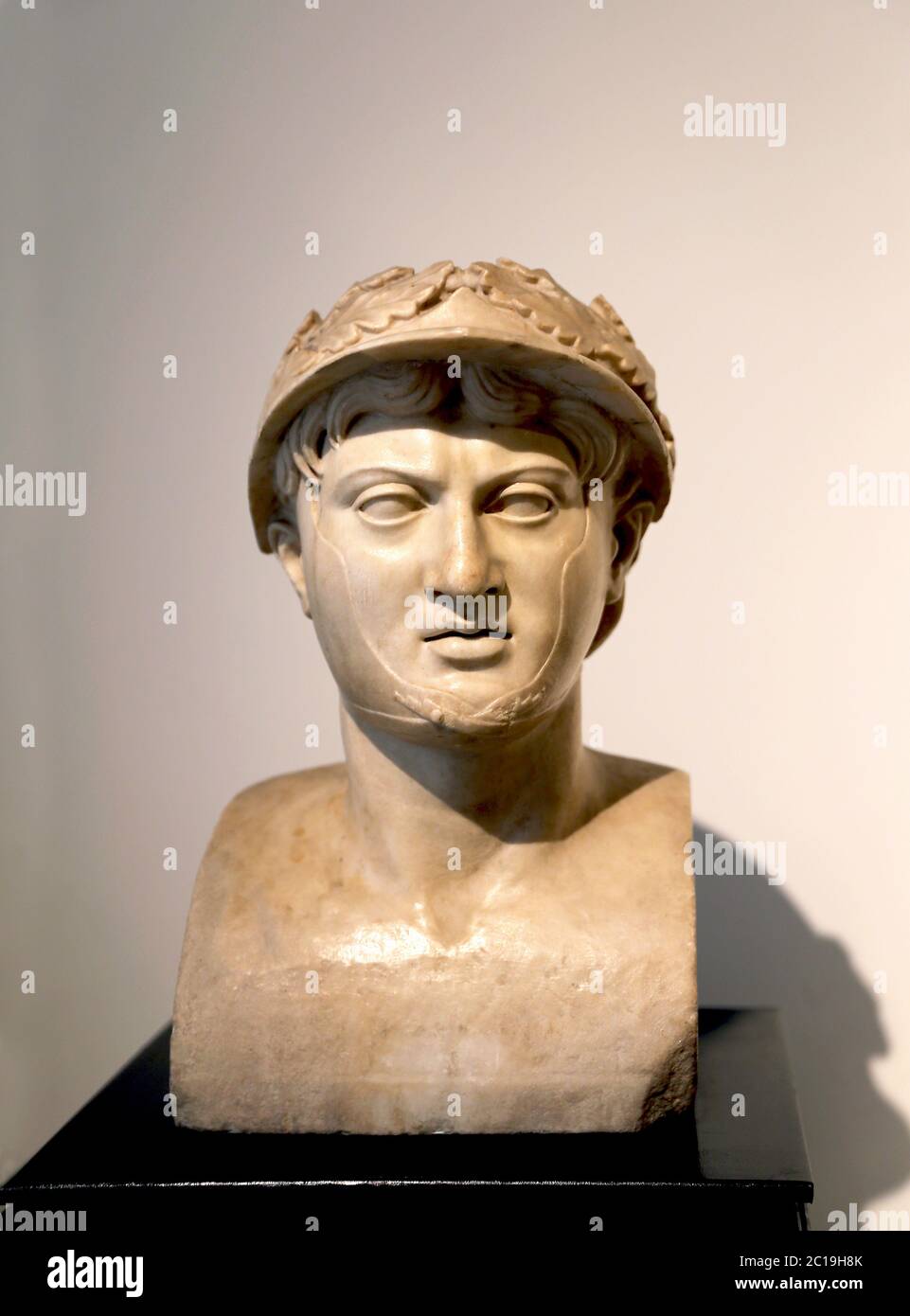 Pyrrhus of Epirus (c. 319-272 BC) Roman marble, 1st century BC. Villa dei Papyri, Herculaneum. Naples Archaeological Museum, Italy. Stock Photohttps://www.alamy.com/image-license-details/?v=1https://www.alamy.com/pyrrhus-of-epirus-c-319-272-bc-roman-marble-1st-century-bc-villa-dei-papyri-herculaneum-naples-archaeological-museum-italy-image362243523.html
Pyrrhus of Epirus (c. 319-272 BC) Roman marble, 1st century BC. Villa dei Papyri, Herculaneum. Naples Archaeological Museum, Italy. Stock Photohttps://www.alamy.com/image-license-details/?v=1https://www.alamy.com/pyrrhus-of-epirus-c-319-272-bc-roman-marble-1st-century-bc-villa-dei-papyri-herculaneum-naples-archaeological-museum-italy-image362243523.htmlRM2C19H8K–Pyrrhus of Epirus (c. 319-272 BC) Roman marble, 1st century BC. Villa dei Papyri, Herculaneum. Naples Archaeological Museum, Italy.
 Ear of Dionysius. Cavities transformed into jail by the tyrant of Syracuse, Sicily, Italy. Europe. Old 19th century engraved illustration from El Mundo Ilustrado 1879 Stock Photohttps://www.alamy.com/image-license-details/?v=1https://www.alamy.com/ear-of-dionysius-cavities-transformed-into-jail-by-the-tyrant-of-syracuse-sicily-italy-europe-old-19th-century-engraved-illustration-from-el-mundo-ilustrado-1879-image402128167.html
Ear of Dionysius. Cavities transformed into jail by the tyrant of Syracuse, Sicily, Italy. Europe. Old 19th century engraved illustration from El Mundo Ilustrado 1879 Stock Photohttps://www.alamy.com/image-license-details/?v=1https://www.alamy.com/ear-of-dionysius-cavities-transformed-into-jail-by-the-tyrant-of-syracuse-sicily-italy-europe-old-19th-century-engraved-illustration-from-el-mundo-ilustrado-1879-image402128167.htmlRM2EA6EG7–Ear of Dionysius. Cavities transformed into jail by the tyrant of Syracuse, Sicily, Italy. Europe. Old 19th century engraved illustration from El Mundo Ilustrado 1879
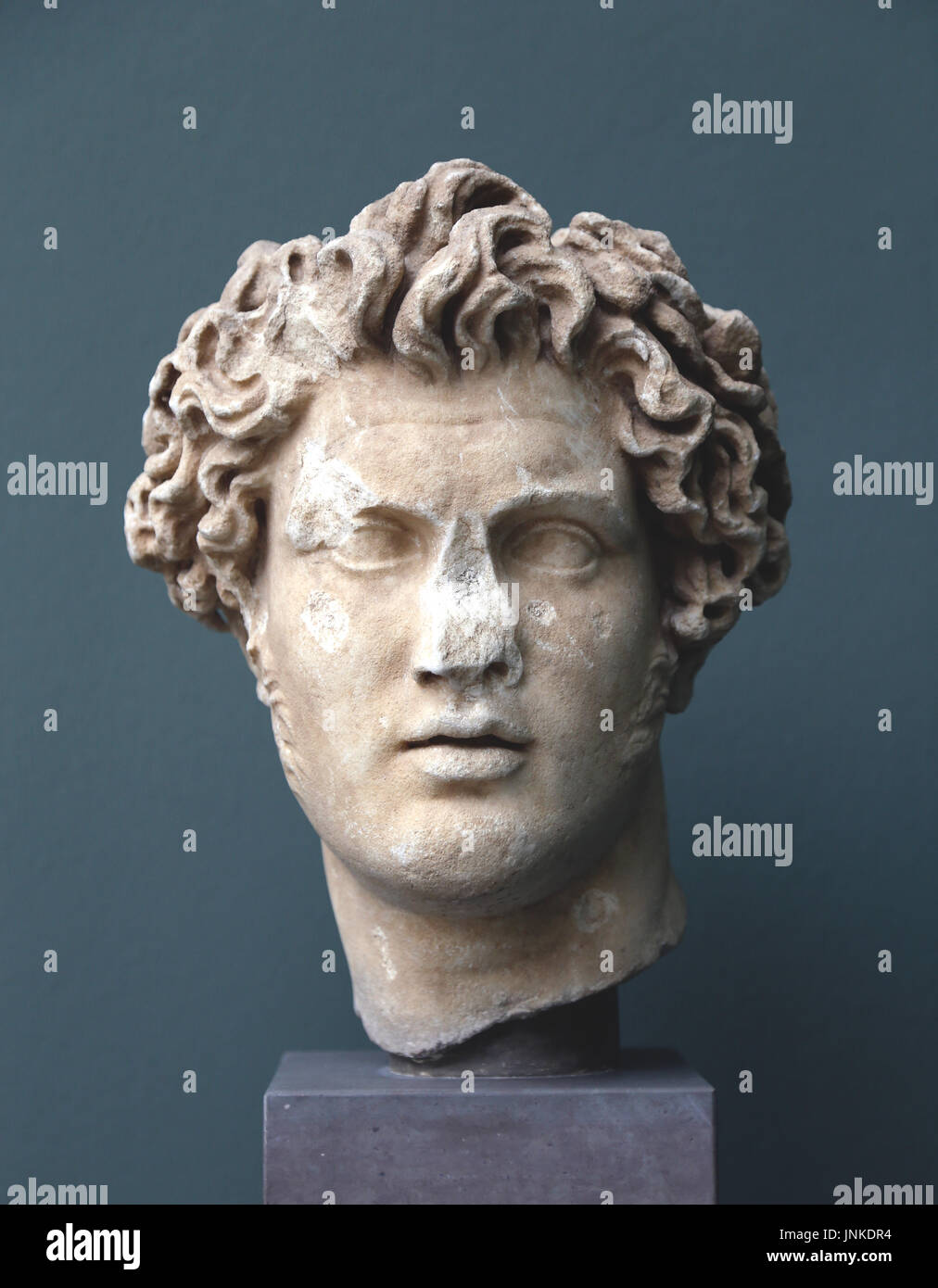 Pyrrhus, King of Epirus (319–272 BC). Roman copy of a Greek 3rd Century BC original. Marble bust. Ny Carlsberg Glyptotek. Stock Photohttps://www.alamy.com/image-license-details/?v=1https://www.alamy.com/pyrrhus-king-of-epirus-319272-bc-roman-copy-of-a-greek-3rd-century-image151018648.html
Pyrrhus, King of Epirus (319–272 BC). Roman copy of a Greek 3rd Century BC original. Marble bust. Ny Carlsberg Glyptotek. Stock Photohttps://www.alamy.com/image-license-details/?v=1https://www.alamy.com/pyrrhus-king-of-epirus-319272-bc-roman-copy-of-a-greek-3rd-century-image151018648.htmlRMJNKDR4–Pyrrhus, King of Epirus (319–272 BC). Roman copy of a Greek 3rd Century BC original. Marble bust. Ny Carlsberg Glyptotek.
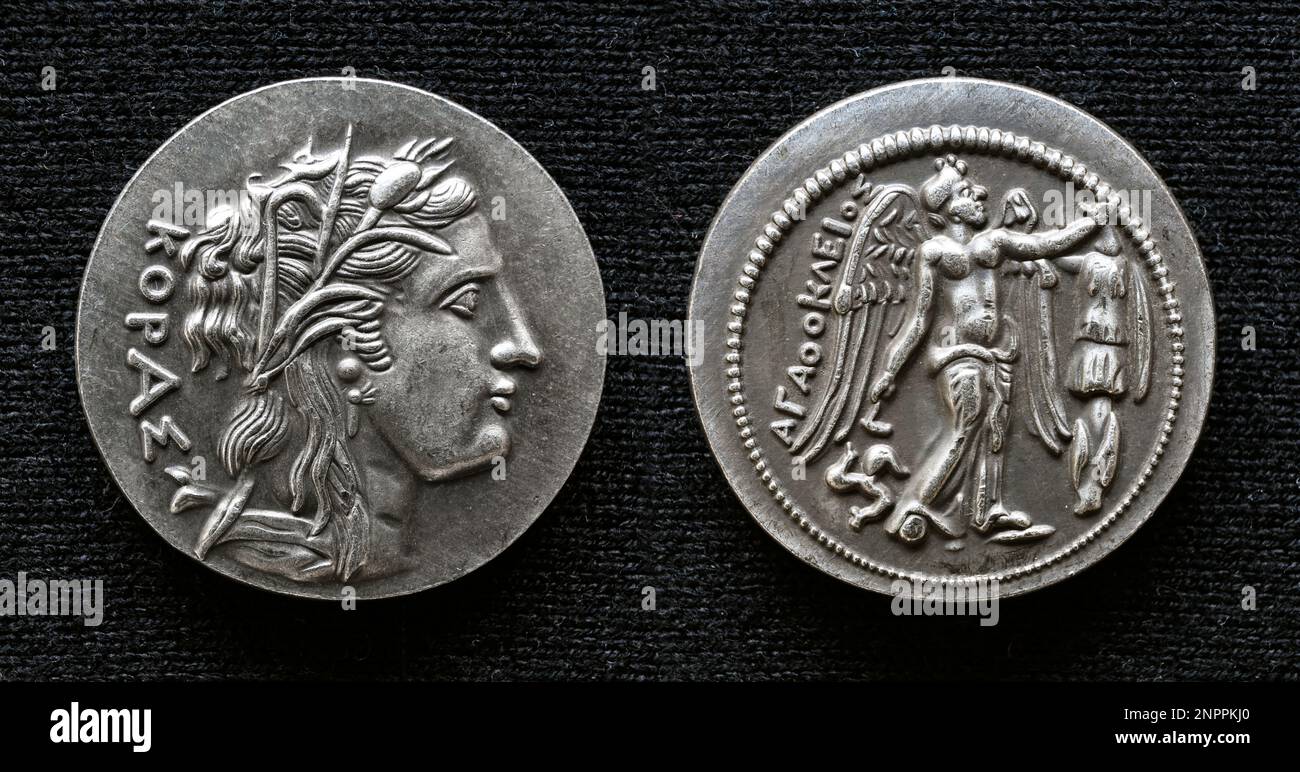 Ancient Greek coin of Agathocles, tyrant of Syracuse, Sicily. Tetradrachm with portrait of Persephone (Kore) and winged goddess Nike, macro view. Them Stock Photohttps://www.alamy.com/image-license-details/?v=1https://www.alamy.com/ancient-greek-coin-of-agathocles-tyrant-of-syracuse-sicily-tetradrachm-with-portrait-of-persephone-kore-and-winged-goddess-nike-macro-view-them-image530331816.html
Ancient Greek coin of Agathocles, tyrant of Syracuse, Sicily. Tetradrachm with portrait of Persephone (Kore) and winged goddess Nike, macro view. Them Stock Photohttps://www.alamy.com/image-license-details/?v=1https://www.alamy.com/ancient-greek-coin-of-agathocles-tyrant-of-syracuse-sicily-tetradrachm-with-portrait-of-persephone-kore-and-winged-goddess-nike-macro-view-them-image530331816.htmlRF2NPPKJ0–Ancient Greek coin of Agathocles, tyrant of Syracuse, Sicily. Tetradrachm with portrait of Persephone (Kore) and winged goddess Nike, macro view. Them
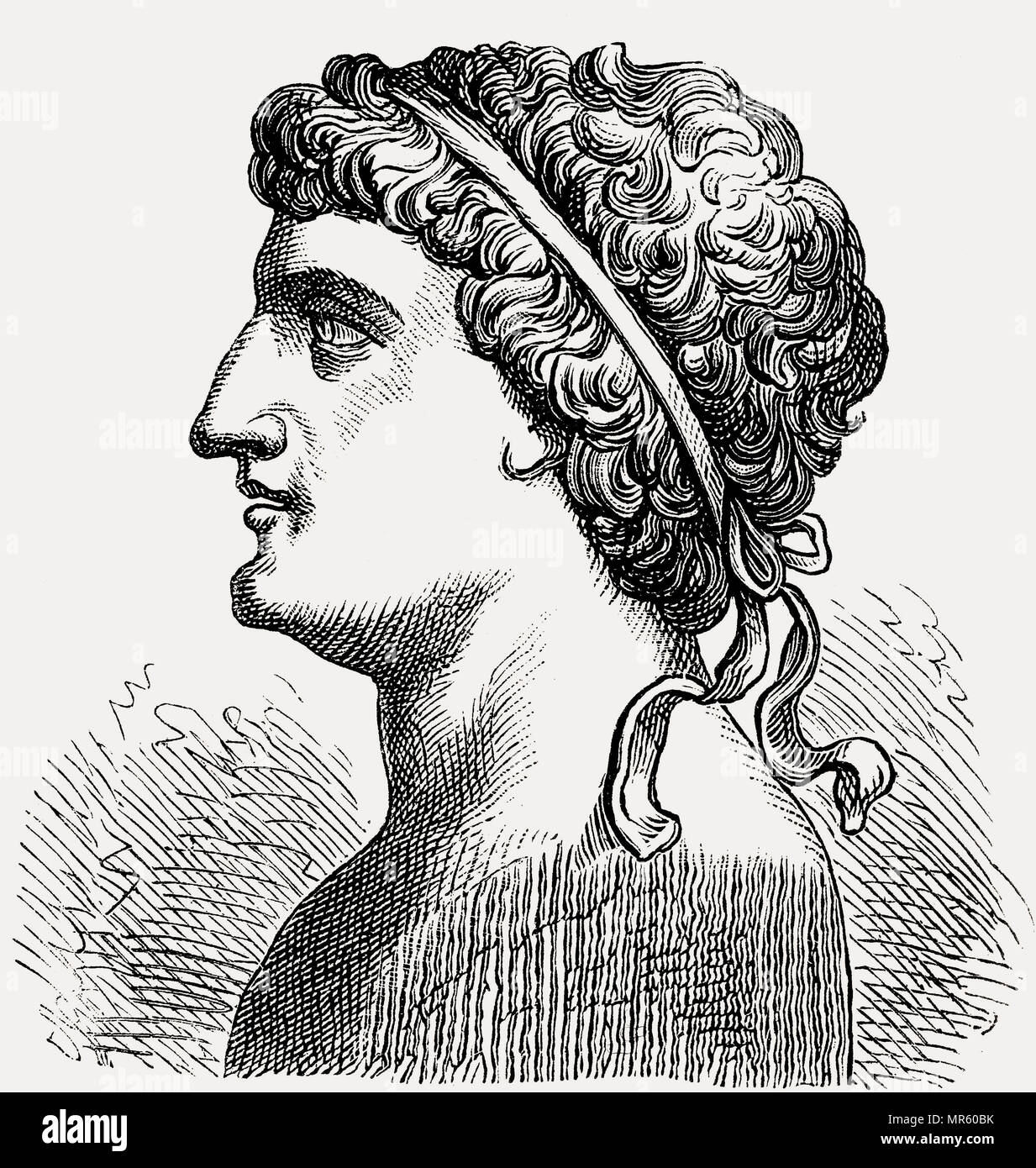 Hiero II, c. 308 BC – 215 BC, the Greek Sicilian Tyrant of Syracuse from 270 to 215 BC Stock Photohttps://www.alamy.com/image-license-details/?v=1https://www.alamy.com/hiero-ii-c-308-bc-215-bc-the-greek-sicilian-tyrant-of-syracuse-from-270-to-215-bc-image186372807.html
Hiero II, c. 308 BC – 215 BC, the Greek Sicilian Tyrant of Syracuse from 270 to 215 BC Stock Photohttps://www.alamy.com/image-license-details/?v=1https://www.alamy.com/hiero-ii-c-308-bc-215-bc-the-greek-sicilian-tyrant-of-syracuse-from-270-to-215-bc-image186372807.htmlRMMR60BK–Hiero II, c. 308 BC – 215 BC, the Greek Sicilian Tyrant of Syracuse from 270 to 215 BC
 KARIKATUUR VAN DIIONYSIOS II VAN SYRACUSE, HONORé DAUMIER, 1842 The exiled Tiran Dionysios II of Syracuse spends his last years of life in Corinth as a schoolmaster. Paris paper caricatures (human types). (story of) Dionysius II, tyrant of Syracuse (+ caricature). historical persons Stock Photohttps://www.alamy.com/image-license-details/?v=1https://www.alamy.com/karikatuur-van-diionysios-ii-van-syracuse-honor-daumier-1842-the-exiled-tiran-dionysios-ii-of-syracuse-spends-his-last-years-of-life-in-corinth-as-a-schoolmaster-paris-paper-caricatures-human-types-story-of-dionysius-ii-tyrant-of-syracuse-caricature-historical-persons-image593811619.html
KARIKATUUR VAN DIIONYSIOS II VAN SYRACUSE, HONORé DAUMIER, 1842 The exiled Tiran Dionysios II of Syracuse spends his last years of life in Corinth as a schoolmaster. Paris paper caricatures (human types). (story of) Dionysius II, tyrant of Syracuse (+ caricature). historical persons Stock Photohttps://www.alamy.com/image-license-details/?v=1https://www.alamy.com/karikatuur-van-diionysios-ii-van-syracuse-honor-daumier-1842-the-exiled-tiran-dionysios-ii-of-syracuse-spends-his-last-years-of-life-in-corinth-as-a-schoolmaster-paris-paper-caricatures-human-types-story-of-dionysius-ii-tyrant-of-syracuse-caricature-historical-persons-image593811619.htmlRM2WE2CNR–KARIKATUUR VAN DIIONYSIOS II VAN SYRACUSE, HONORé DAUMIER, 1842 The exiled Tiran Dionysios II of Syracuse spends his last years of life in Corinth as a schoolmaster. Paris paper caricatures (human types). (story of) Dionysius II, tyrant of Syracuse (+ caricature). historical persons
 Battle Of Himera Stock Photohttps://www.alamy.com/image-license-details/?v=1https://www.alamy.com/stock-photo-battle-of-himera-56750665.html
Battle Of Himera Stock Photohttps://www.alamy.com/image-license-details/?v=1https://www.alamy.com/stock-photo-battle-of-himera-56750665.htmlRMD8961D–Battle Of Himera
 Caricature of Dionysios II of Syracuse, Denys le tyran (title on object), Caricatures of figures from Antiquity (series title), Histoire ancienne (series title on object), The exiled tyrant Dionysios II of Syracuse spends his last years in Corinth as a schoolmaster., print maker: Honoré Daumier, printer: Aubert & Cie., publisher: Bauger, Paris, 1842, paper, height 362 mm × width 237 mm Stock Photohttps://www.alamy.com/image-license-details/?v=1https://www.alamy.com/caricature-of-dionysios-ii-of-syracuse-denys-le-tyran-title-on-object-caricatures-of-figures-from-antiquity-series-title-histoire-ancienne-series-title-on-object-the-exiled-tyrant-dionysios-ii-of-syracuse-spends-his-last-years-in-corinth-as-a-schoolmaster-print-maker-honor-daumier-printer-aubert-cie-publisher-bauger-paris-1842-paper-height-362-mm-width-237-mm-image599466637.html
Caricature of Dionysios II of Syracuse, Denys le tyran (title on object), Caricatures of figures from Antiquity (series title), Histoire ancienne (series title on object), The exiled tyrant Dionysios II of Syracuse spends his last years in Corinth as a schoolmaster., print maker: Honoré Daumier, printer: Aubert & Cie., publisher: Bauger, Paris, 1842, paper, height 362 mm × width 237 mm Stock Photohttps://www.alamy.com/image-license-details/?v=1https://www.alamy.com/caricature-of-dionysios-ii-of-syracuse-denys-le-tyran-title-on-object-caricatures-of-figures-from-antiquity-series-title-histoire-ancienne-series-title-on-object-the-exiled-tyrant-dionysios-ii-of-syracuse-spends-his-last-years-in-corinth-as-a-schoolmaster-print-maker-honor-daumier-printer-aubert-cie-publisher-bauger-paris-1842-paper-height-362-mm-width-237-mm-image599466637.htmlRM2WR81PN–Caricature of Dionysios II of Syracuse, Denys le tyran (title on object), Caricatures of figures from Antiquity (series title), Histoire ancienne (series title on object), The exiled tyrant Dionysios II of Syracuse spends his last years in Corinth as a schoolmaster., print maker: Honoré Daumier, printer: Aubert & Cie., publisher: Bauger, Paris, 1842, paper, height 362 mm × width 237 mm
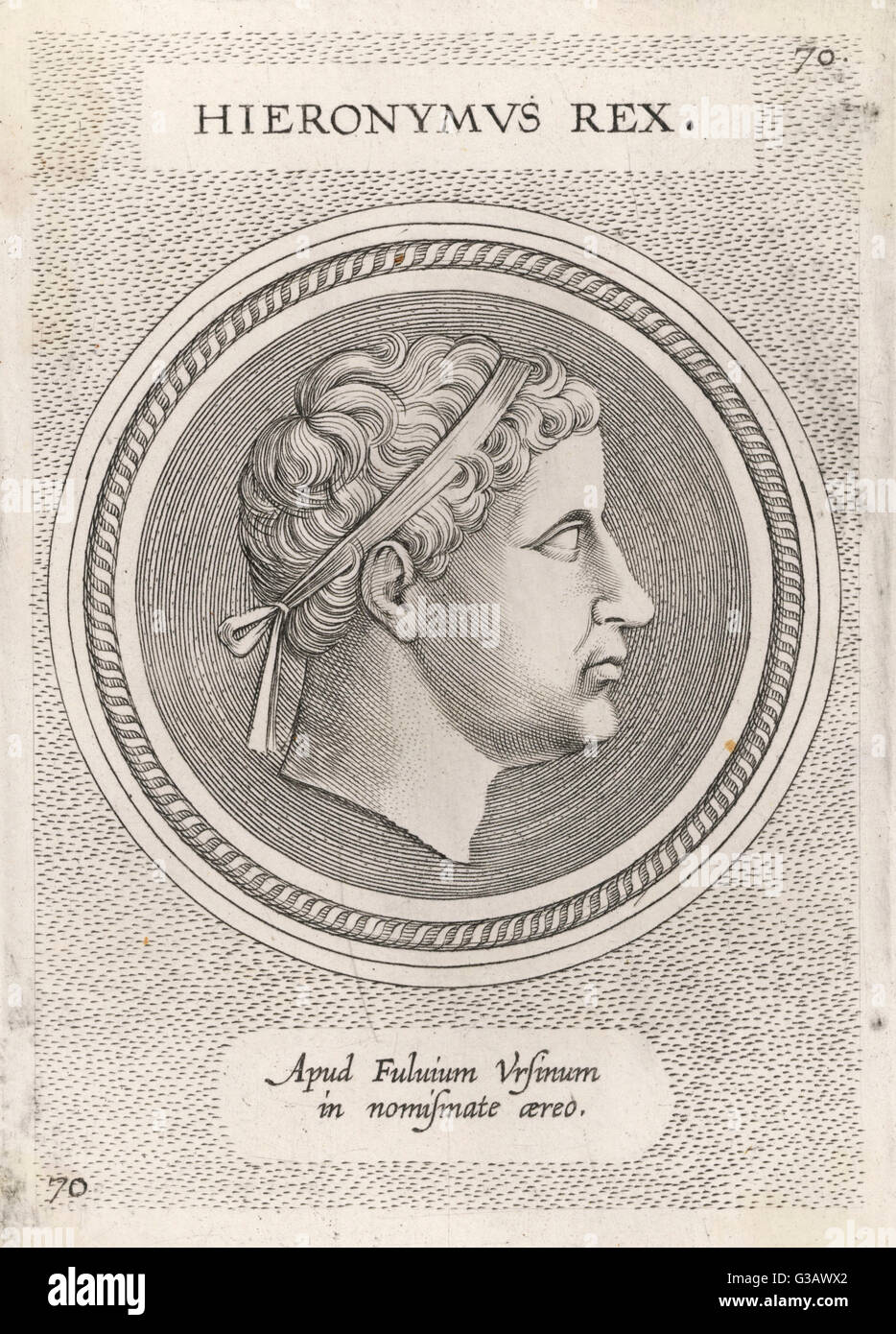 HIERO II/SYRACUSE Stock Photohttps://www.alamy.com/image-license-details/?v=1https://www.alamy.com/stock-photo-hiero-iisyracuse-105346026.html
HIERO II/SYRACUSE Stock Photohttps://www.alamy.com/image-license-details/?v=1https://www.alamy.com/stock-photo-hiero-iisyracuse-105346026.htmlRMG3AWX2–HIERO II/SYRACUSE
 Classical portrait of Hieron II, king of Syracuse from 270 to 215 BC. He was a former general of Pyrrhus of Epirus Stock Photohttps://www.alamy.com/image-license-details/?v=1https://www.alamy.com/stock-photo-classical-portrait-of-hieron-ii-king-of-syracuse-from-270-to-215-bc-37197637.html
Classical portrait of Hieron II, king of Syracuse from 270 to 215 BC. He was a former general of Pyrrhus of Epirus Stock Photohttps://www.alamy.com/image-license-details/?v=1https://www.alamy.com/stock-photo-classical-portrait-of-hieron-ii-king-of-syracuse-from-270-to-215-bc-37197637.htmlRMC4EDY1–Classical portrait of Hieron II, king of Syracuse from 270 to 215 BC. He was a former general of Pyrrhus of Epirus
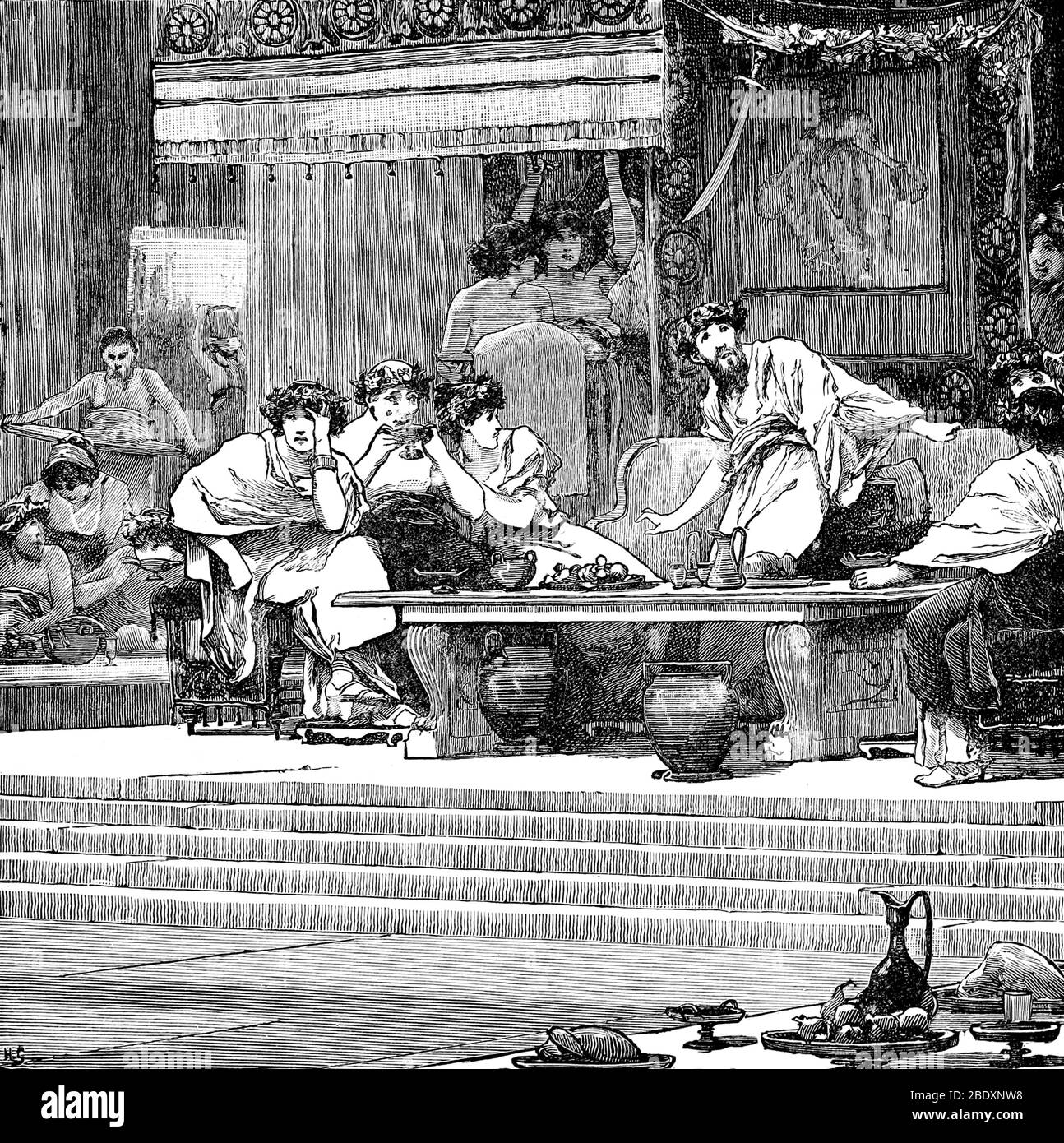 Sword of Damocles, 4th century BC Stock Photohttps://www.alamy.com/image-license-details/?v=1https://www.alamy.com/sword-of-damocles-4th-century-bc-image352785812.html
Sword of Damocles, 4th century BC Stock Photohttps://www.alamy.com/image-license-details/?v=1https://www.alamy.com/sword-of-damocles-4th-century-bc-image352785812.htmlRF2BDXNW8–Sword of Damocles, 4th century BC
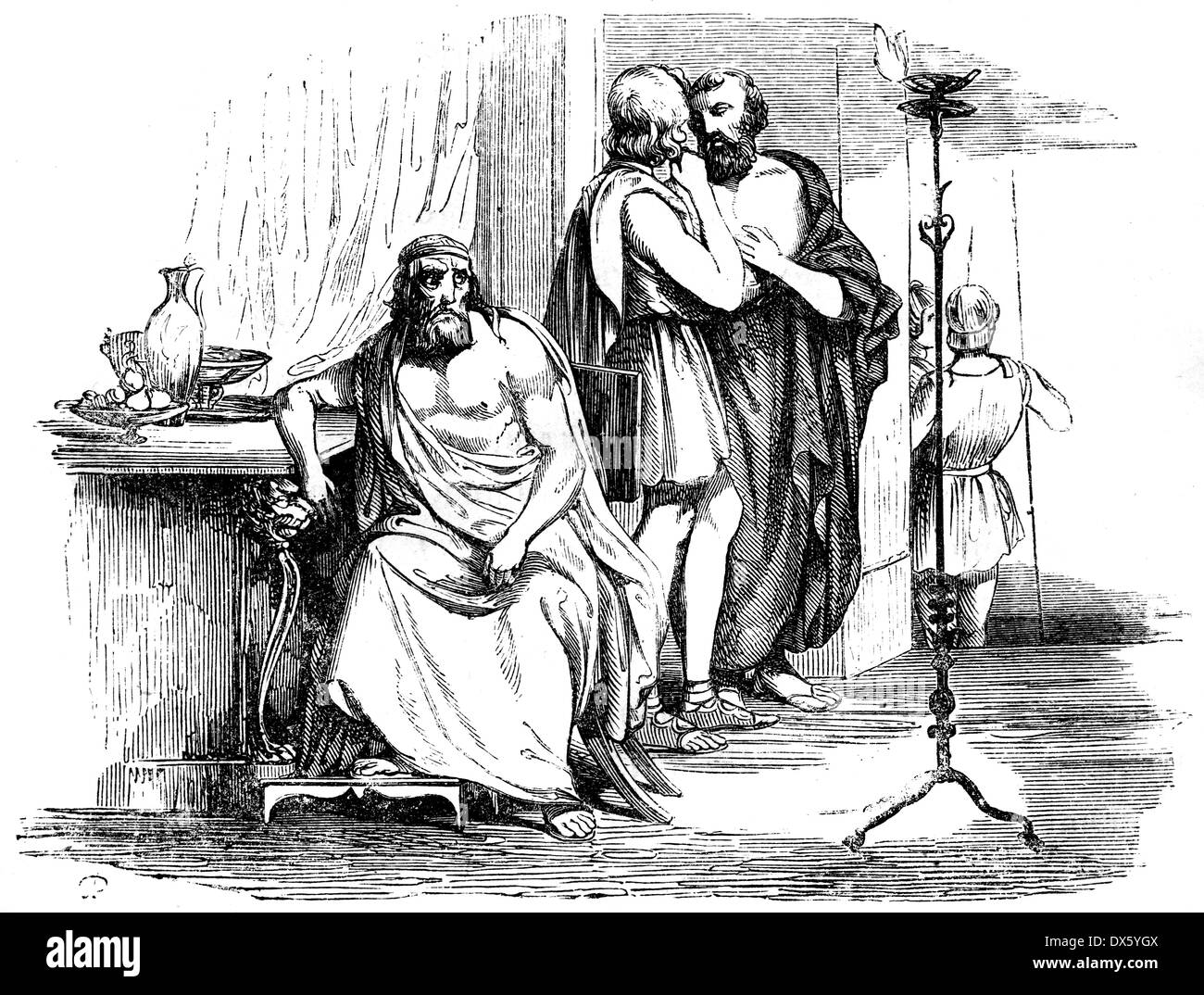 Dionysius I of Syracuse, illustration from book dated 1878 Stock Photohttps://www.alamy.com/image-license-details/?v=1https://www.alamy.com/dionysius-i-of-syracuse-illustration-from-book-dated-1878-image67743562.html
Dionysius I of Syracuse, illustration from book dated 1878 Stock Photohttps://www.alamy.com/image-license-details/?v=1https://www.alamy.com/dionysius-i-of-syracuse-illustration-from-book-dated-1878-image67743562.htmlRMDX5YGX–Dionysius I of Syracuse, illustration from book dated 1878
 Hiero I, circa 540/525 - 466 BC, Tyrant of Syracuse 478 - 466, portrait, wood engraving, 19th century, after coin, , Stock Photohttps://www.alamy.com/image-license-details/?v=1https://www.alamy.com/stock-photo-hiero-i-circa-540525-466-bc-tyrant-of-syracuse-478-466-portrait-wood-19749480.html
Hiero I, circa 540/525 - 466 BC, Tyrant of Syracuse 478 - 466, portrait, wood engraving, 19th century, after coin, , Stock Photohttps://www.alamy.com/image-license-details/?v=1https://www.alamy.com/stock-photo-hiero-i-circa-540525-466-bc-tyrant-of-syracuse-478-466-portrait-wood-19749480.htmlRMB43JJG–Hiero I, circa 540/525 - 466 BC, Tyrant of Syracuse 478 - 466, portrait, wood engraving, 19th century, after coin, ,
 An industrial zone near Syracuse, Sicily, viewed from the ancient fort of Castello Eurialo Stock Photohttps://www.alamy.com/image-license-details/?v=1https://www.alamy.com/an-industrial-zone-near-syracuse-sicily-viewed-from-the-ancient-fort-image5331190.html
An industrial zone near Syracuse, Sicily, viewed from the ancient fort of Castello Eurialo Stock Photohttps://www.alamy.com/image-license-details/?v=1https://www.alamy.com/an-industrial-zone-near-syracuse-sicily-viewed-from-the-ancient-fort-image5331190.htmlRMATJGF7–An industrial zone near Syracuse, Sicily, viewed from the ancient fort of Castello Eurialo
 The 'man of the people', Heroes and heroines from the Bible and classical antiquity (series title), Landscape with an anonymous man. In his hand the head of Jerome the tyrant, king of Syracuse, about whom Livius tells that he was lured into defeat by his own men. In the margin a two-line caption in Latin and Dutch., print, print maker: Hieronymus Wierix, (attributed to), after design by: Marten van Cleve (I), (attributed to), publisher: Willem van Haecht (I), Antwerp, 1578, paper, engraving, height, 135 mm × width, 100 mm Stock Photohttps://www.alamy.com/image-license-details/?v=1https://www.alamy.com/the-man-of-the-people-heroes-and-heroines-from-the-bible-and-classical-antiquity-series-title-landscape-with-an-anonymous-man-in-his-hand-the-head-of-jerome-the-tyrant-king-of-syracuse-about-whom-livius-tells-that-he-was-lured-into-defeat-by-his-own-men-in-the-margin-a-two-line-caption-in-latin-and-dutch-print-print-maker-hieronymus-wierix-attributed-to-after-design-by-marten-van-cleve-i-attributed-to-publisher-willem-van-haecht-i-antwerp-1578-paper-engraving-height-135-mm-width-100-mm-image623507301.html
The 'man of the people', Heroes and heroines from the Bible and classical antiquity (series title), Landscape with an anonymous man. In his hand the head of Jerome the tyrant, king of Syracuse, about whom Livius tells that he was lured into defeat by his own men. In the margin a two-line caption in Latin and Dutch., print, print maker: Hieronymus Wierix, (attributed to), after design by: Marten van Cleve (I), (attributed to), publisher: Willem van Haecht (I), Antwerp, 1578, paper, engraving, height, 135 mm × width, 100 mm Stock Photohttps://www.alamy.com/image-license-details/?v=1https://www.alamy.com/the-man-of-the-people-heroes-and-heroines-from-the-bible-and-classical-antiquity-series-title-landscape-with-an-anonymous-man-in-his-hand-the-head-of-jerome-the-tyrant-king-of-syracuse-about-whom-livius-tells-that-he-was-lured-into-defeat-by-his-own-men-in-the-margin-a-two-line-caption-in-latin-and-dutch-print-print-maker-hieronymus-wierix-attributed-to-after-design-by-marten-van-cleve-i-attributed-to-publisher-willem-van-haecht-i-antwerp-1578-paper-engraving-height-135-mm-width-100-mm-image623507301.htmlRM2Y6B5WW–The 'man of the people', Heroes and heroines from the Bible and classical antiquity (series title), Landscape with an anonymous man. In his hand the head of Jerome the tyrant, king of Syracuse, about whom Livius tells that he was lured into defeat by his own men. In the margin a two-line caption in Latin and Dutch., print, print maker: Hieronymus Wierix, (attributed to), after design by: Marten van Cleve (I), (attributed to), publisher: Willem van Haecht (I), Antwerp, 1578, paper, engraving, height, 135 mm × width, 100 mm
RM2T68EYP–Hiero I, or Hieron I, tyrant of Syracuse, Sicily, 478 to 467 BC. Son of Deinomenes, and brother of Gelon. He sided with the Cumaeans in their battle against the Etruscans at the Battle of Cumae 474 BC. Head of a man wearing royal diadem from a bronze medal. Hierone. Copperplate engraving by Guillaume Vallet after Giovanni Angelo Canini from Iconografia, cioe disegni d'imagini de famosissimi monarchi, regi, filososi, poeti ed oratori dell' Antichita, Drawings of images of famous monarchs, kings, philosophers, poets and orators of Antiquity, Ignatio deLazari, Rome, 1699.
RM2P738AN–Hiero I, or Hieron I, tyrant of Syracuse, Sicily, 478 to 467 BC. Son of Deinomenes, and brother of Gelon. He sided with the Cumaeans in their battle against the Etruscans at the Battle of Cumae 474 BC. Head of a man wearing royal diadem. Hierone. Copperplate engraving by Guillaume Vallet after Giovanni Angelo Canini from Iconografia, cioe disegni d'imagini de famosissimi monarchi, regi, filososi, poeti ed oratori dell' Antichita, Drawings of images of famous monarchs, kings, philosophers, poets and orators of Antiquity, Ignatio de’Lazari, Rome, 1699.
 Italy Sicily SyracUnited States Latomia del Paradiso the Tyrant Denys's ear (window in the rock) in the large stone quarry near Stock Photohttps://www.alamy.com/image-license-details/?v=1https://www.alamy.com/stock-photo-italy-sicily-syracunited-states-latomia-del-paradiso-the-tyrant-denyss-35518718.html
Italy Sicily SyracUnited States Latomia del Paradiso the Tyrant Denys's ear (window in the rock) in the large stone quarry near Stock Photohttps://www.alamy.com/image-license-details/?v=1https://www.alamy.com/stock-photo-italy-sicily-syracunited-states-latomia-del-paradiso-the-tyrant-denyss-35518718.htmlRMC1P0DJ–Italy Sicily SyracUnited States Latomia del Paradiso the Tyrant Denys's ear (window in the rock) in the large stone quarry near
 Ear of Dionysius - Neapolis Archaeological Park - Syracuse, Sicily, Italy This name was given to it by Caravaggio, because when he saw it and knew the story that linked it to the tyrant Dionysius I of Syracuse, who secretly heard what his prisoners were saying from inside the latomia, he thought that the name of 'Ear ', given its history and shape similar to an immense auricle, was really appropriate Stock Photohttps://www.alamy.com/image-license-details/?v=1https://www.alamy.com/ear-of-dionysius-neapolis-archaeological-park-syracuse-sicily-italy-this-name-was-given-to-it-by-caravaggio-because-when-he-saw-it-and-knew-the-story-that-linked-it-to-the-tyrant-dionysius-i-of-syracuse-who-secretly-heard-what-his-prisoners-were-saying-from-inside-the-latomia-he-thought-that-the-name-of-ear-given-its-history-and-shape-similar-to-an-immense-auricle-was-really-appropriate-image511965904.html
Ear of Dionysius - Neapolis Archaeological Park - Syracuse, Sicily, Italy This name was given to it by Caravaggio, because when he saw it and knew the story that linked it to the tyrant Dionysius I of Syracuse, who secretly heard what his prisoners were saying from inside the latomia, he thought that the name of 'Ear ', given its history and shape similar to an immense auricle, was really appropriate Stock Photohttps://www.alamy.com/image-license-details/?v=1https://www.alamy.com/ear-of-dionysius-neapolis-archaeological-park-syracuse-sicily-italy-this-name-was-given-to-it-by-caravaggio-because-when-he-saw-it-and-knew-the-story-that-linked-it-to-the-tyrant-dionysius-i-of-syracuse-who-secretly-heard-what-his-prisoners-were-saying-from-inside-the-latomia-he-thought-that-the-name-of-ear-given-its-history-and-shape-similar-to-an-immense-auricle-was-really-appropriate-image511965904.htmlRM2MMX1MG–Ear of Dionysius - Neapolis Archaeological Park - Syracuse, Sicily, Italy This name was given to it by Caravaggio, because when he saw it and knew the story that linked it to the tyrant Dionysius I of Syracuse, who secretly heard what his prisoners were saying from inside the latomia, he thought that the name of 'Ear ', given its history and shape similar to an immense auricle, was really appropriate
 Landscape with an anonymous man. In his hand the head of Jerome the tyrant, king of Syracuse, whom Livius tells was lured into defeat by his own men. Stock Photohttps://www.alamy.com/image-license-details/?v=1https://www.alamy.com/landscape-with-an-anonymous-man-in-his-hand-the-head-of-jerome-the-tyrant-king-of-syracuse-whom-livius-tells-was-lured-into-defeat-by-his-own-men-image570293842.html
Landscape with an anonymous man. In his hand the head of Jerome the tyrant, king of Syracuse, whom Livius tells was lured into defeat by his own men. Stock Photohttps://www.alamy.com/image-license-details/?v=1https://www.alamy.com/landscape-with-an-anonymous-man-in-his-hand-the-head-of-jerome-the-tyrant-king-of-syracuse-whom-livius-tells-was-lured-into-defeat-by-his-own-men-image570293842.htmlRF2T3R3H6–Landscape with an anonymous man. In his hand the head of Jerome the tyrant, king of Syracuse, whom Livius tells was lured into defeat by his own men.
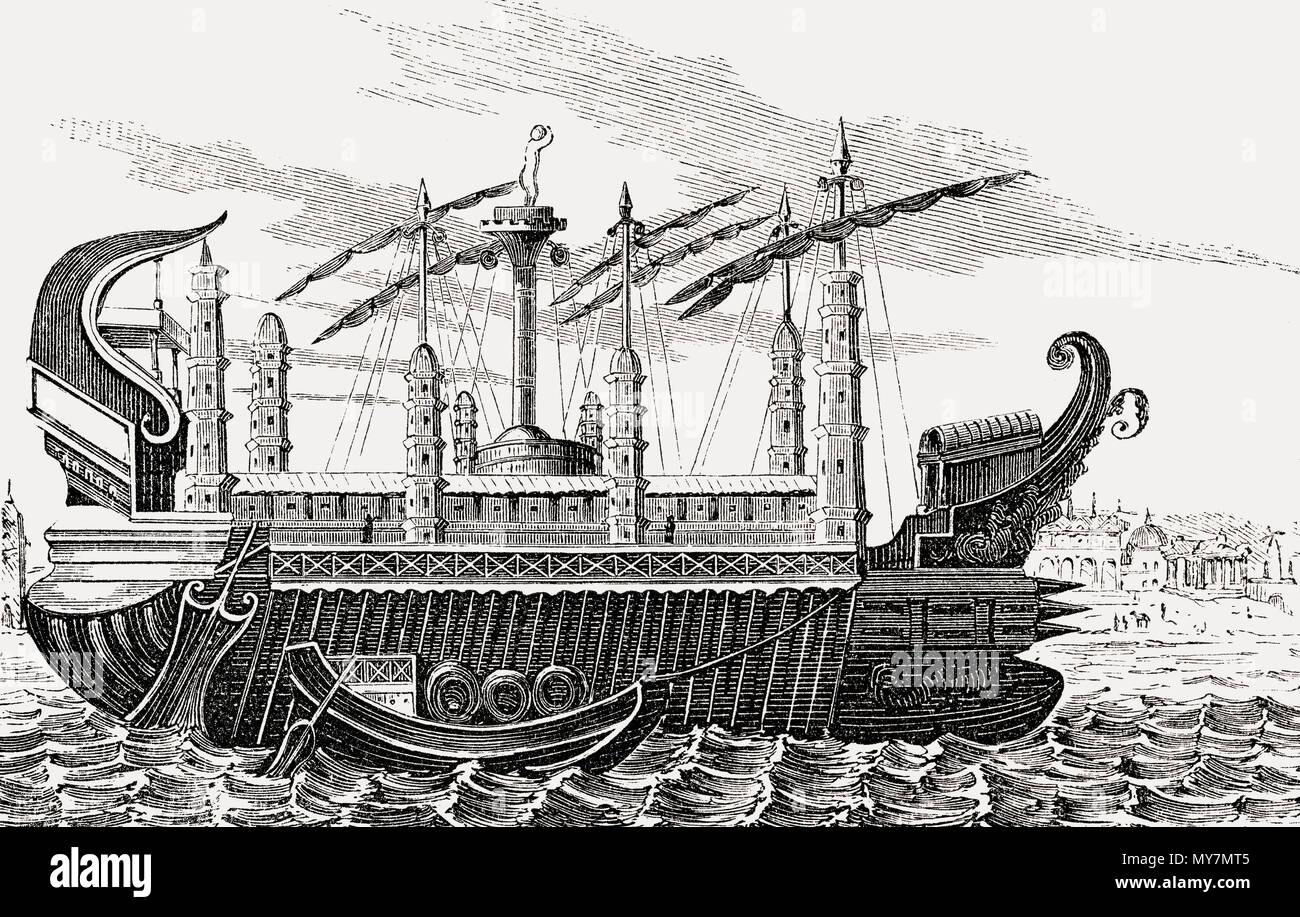 Syracusia or Syracuse, an ancient Greek ship of Hiero II Stock Photohttps://www.alamy.com/image-license-details/?v=1https://www.alamy.com/syracusia-or-syracuse-an-ancient-greek-ship-of-hiero-ii-image188869413.html
Syracusia or Syracuse, an ancient Greek ship of Hiero II Stock Photohttps://www.alamy.com/image-license-details/?v=1https://www.alamy.com/syracusia-or-syracuse-an-ancient-greek-ship-of-hiero-ii-image188869413.htmlRMMY7MT5–Syracusia or Syracuse, an ancient Greek ship of Hiero II
 The temples and ritual of Asklepios at Epidauros and AthensTwo lectures delivered at the Royal Institution of Great Britain . portico orAbaton, a part of which is seen in Plates V. and X. ; thewestern part is in two stories, the lower one being in the 1 Montfaucon (LAntiq. Explic. I ii 289) quotes a curious story to the effect thatDionysios, the Tyrant of Syracuse, visiting Epirlauros, stole the massive golden beanl from thefigure of the god. He excused the theft on the ground that it was unseemly for Asklepios towear a beard when his father Apollo had none ! ASKLEPIOS AT EPIDAUROS AND ATHENS Stock Photohttps://www.alamy.com/image-license-details/?v=1https://www.alamy.com/the-temples-and-ritual-of-asklepios-at-epidauros-and-athenstwo-lectures-delivered-at-the-royal-institution-of-great-britain-portico-orabaton-a-part-of-which-is-seen-in-plates-v-and-x-thewestern-part-is-in-two-stories-the-lower-one-being-in-the-1-montfaucon-lantiq-explic-i-ii-289-quotes-a-curious-story-to-the-effect-thatdionysios-the-tyrant-of-syracuse-visiting-epirlauros-stole-the-massive-golden-beanl-from-thefigure-of-the-god-he-excused-the-theft-on-the-ground-that-it-was-unseemly-for-asklepios-towear-a-beard-when-his-father-apollo-had-none-!-asklepios-at-epidauros-and-athens-image340001346.html
The temples and ritual of Asklepios at Epidauros and AthensTwo lectures delivered at the Royal Institution of Great Britain . portico orAbaton, a part of which is seen in Plates V. and X. ; thewestern part is in two stories, the lower one being in the 1 Montfaucon (LAntiq. Explic. I ii 289) quotes a curious story to the effect thatDionysios, the Tyrant of Syracuse, visiting Epirlauros, stole the massive golden beanl from thefigure of the god. He excused the theft on the ground that it was unseemly for Asklepios towear a beard when his father Apollo had none ! ASKLEPIOS AT EPIDAUROS AND ATHENS Stock Photohttps://www.alamy.com/image-license-details/?v=1https://www.alamy.com/the-temples-and-ritual-of-asklepios-at-epidauros-and-athenstwo-lectures-delivered-at-the-royal-institution-of-great-britain-portico-orabaton-a-part-of-which-is-seen-in-plates-v-and-x-thewestern-part-is-in-two-stories-the-lower-one-being-in-the-1-montfaucon-lantiq-explic-i-ii-289-quotes-a-curious-story-to-the-effect-thatdionysios-the-tyrant-of-syracuse-visiting-epirlauros-stole-the-massive-golden-beanl-from-thefigure-of-the-god-he-excused-the-theft-on-the-ground-that-it-was-unseemly-for-asklepios-towear-a-beard-when-his-father-apollo-had-none-!-asklepios-at-epidauros-and-athens-image340001346.htmlRM2AN4B56–The temples and ritual of Asklepios at Epidauros and AthensTwo lectures delivered at the Royal Institution of Great Britain . portico orAbaton, a part of which is seen in Plates V. and X. ; thewestern part is in two stories, the lower one being in the 1 Montfaucon (LAntiq. Explic. I ii 289) quotes a curious story to the effect thatDionysios, the Tyrant of Syracuse, visiting Epirlauros, stole the massive golden beanl from thefigure of the god. He excused the theft on the ground that it was unseemly for Asklepios towear a beard when his father Apollo had none ! ASKLEPIOS AT EPIDAUROS AND ATHENS
 Ancient Greek archaeological sites in Syracuse, Sicily, Italy. Summer. Stock Photohttps://www.alamy.com/image-license-details/?v=1https://www.alamy.com/stock-image-ancient-greek-archaeological-sites-in-syracuse-sicily-italy-summer-163090054.html
Ancient Greek archaeological sites in Syracuse, Sicily, Italy. Summer. Stock Photohttps://www.alamy.com/image-license-details/?v=1https://www.alamy.com/stock-image-ancient-greek-archaeological-sites-in-syracuse-sicily-italy-summer-163090054.htmlRFKD9B0P–Ancient Greek archaeological sites in Syracuse, Sicily, Italy. Summer.
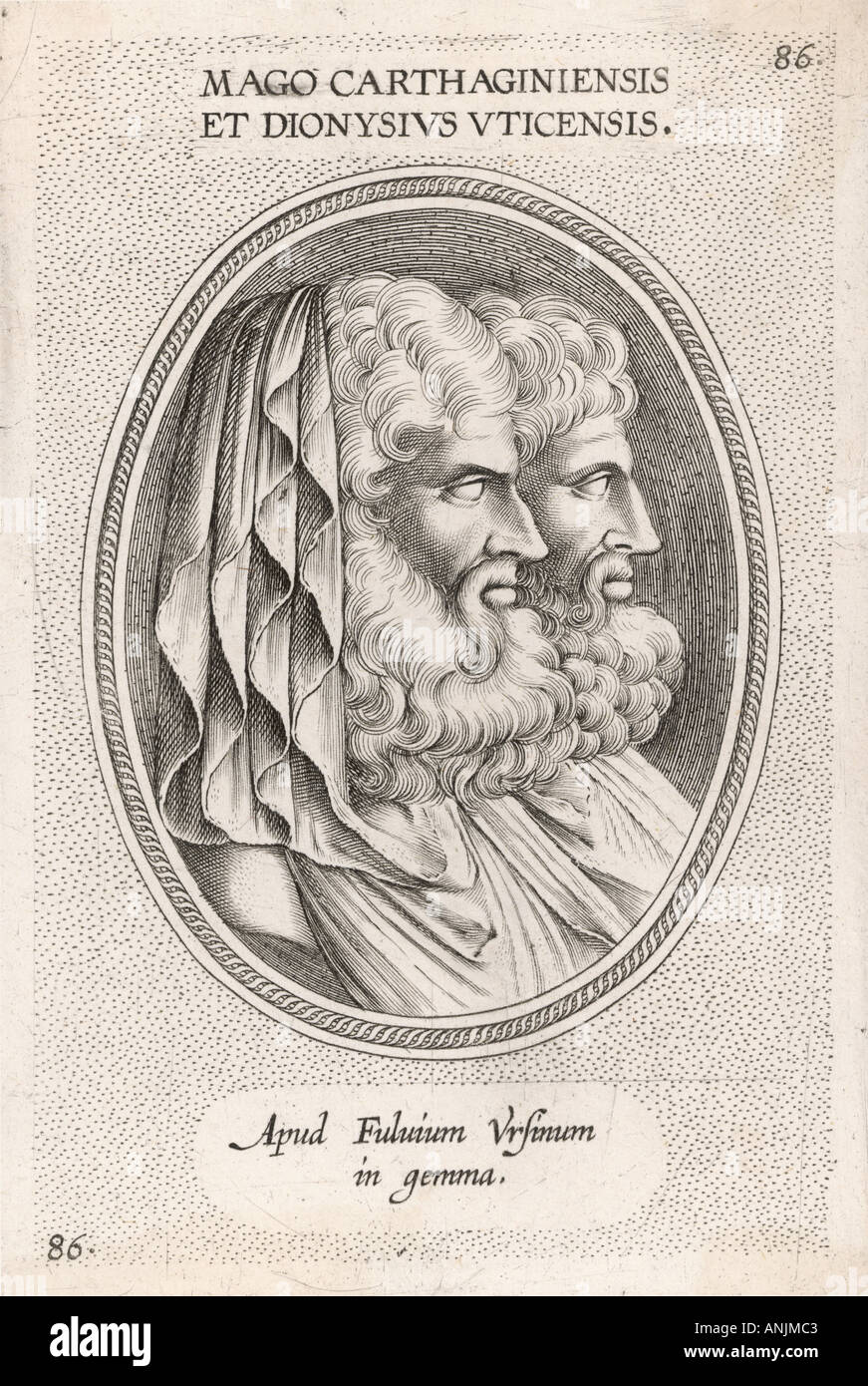 Events Ancient Rome Stock Photohttps://www.alamy.com/image-license-details/?v=1https://www.alamy.com/events-ancient-rome-image5074114.html
Events Ancient Rome Stock Photohttps://www.alamy.com/image-license-details/?v=1https://www.alamy.com/events-ancient-rome-image5074114.htmlRMANJMC3–Events Ancient Rome
 Zwaard van Damocles, Noah van der Meer (II), After Jacobus Buys, 1778 - 1785 print Dionysius has invited Damocles to eat at his table. However, there is a sword on a horse hair above his head. Amsterdam paper etching Damocles, courtier of Dionysius I the Elder, tyrant of Syracuse. sword of Damocles Stock Photohttps://www.alamy.com/image-license-details/?v=1https://www.alamy.com/zwaard-van-damocles-noah-van-der-meer-ii-after-jacobus-buys-1778-1785-print-dionysius-has-invited-damocles-to-eat-at-his-table-however-there-is-a-sword-on-a-horse-hair-above-his-head-amsterdam-paper-etching-damocles-courtier-of-dionysius-i-the-elder-tyrant-of-syracuse-sword-of-damocles-image592892736.html
Zwaard van Damocles, Noah van der Meer (II), After Jacobus Buys, 1778 - 1785 print Dionysius has invited Damocles to eat at his table. However, there is a sword on a horse hair above his head. Amsterdam paper etching Damocles, courtier of Dionysius I the Elder, tyrant of Syracuse. sword of Damocles Stock Photohttps://www.alamy.com/image-license-details/?v=1https://www.alamy.com/zwaard-van-damocles-noah-van-der-meer-ii-after-jacobus-buys-1778-1785-print-dionysius-has-invited-damocles-to-eat-at-his-table-however-there-is-a-sword-on-a-horse-hair-above-his-head-amsterdam-paper-etching-damocles-courtier-of-dionysius-i-the-elder-tyrant-of-syracuse-sword-of-damocles-image592892736.htmlRM2WCGGMG–Zwaard van Damocles, Noah van der Meer (II), After Jacobus Buys, 1778 - 1785 print Dionysius has invited Damocles to eat at his table. However, there is a sword on a horse hair above his head. Amsterdam paper etching Damocles, courtier of Dionysius I the Elder, tyrant of Syracuse. sword of Damocles
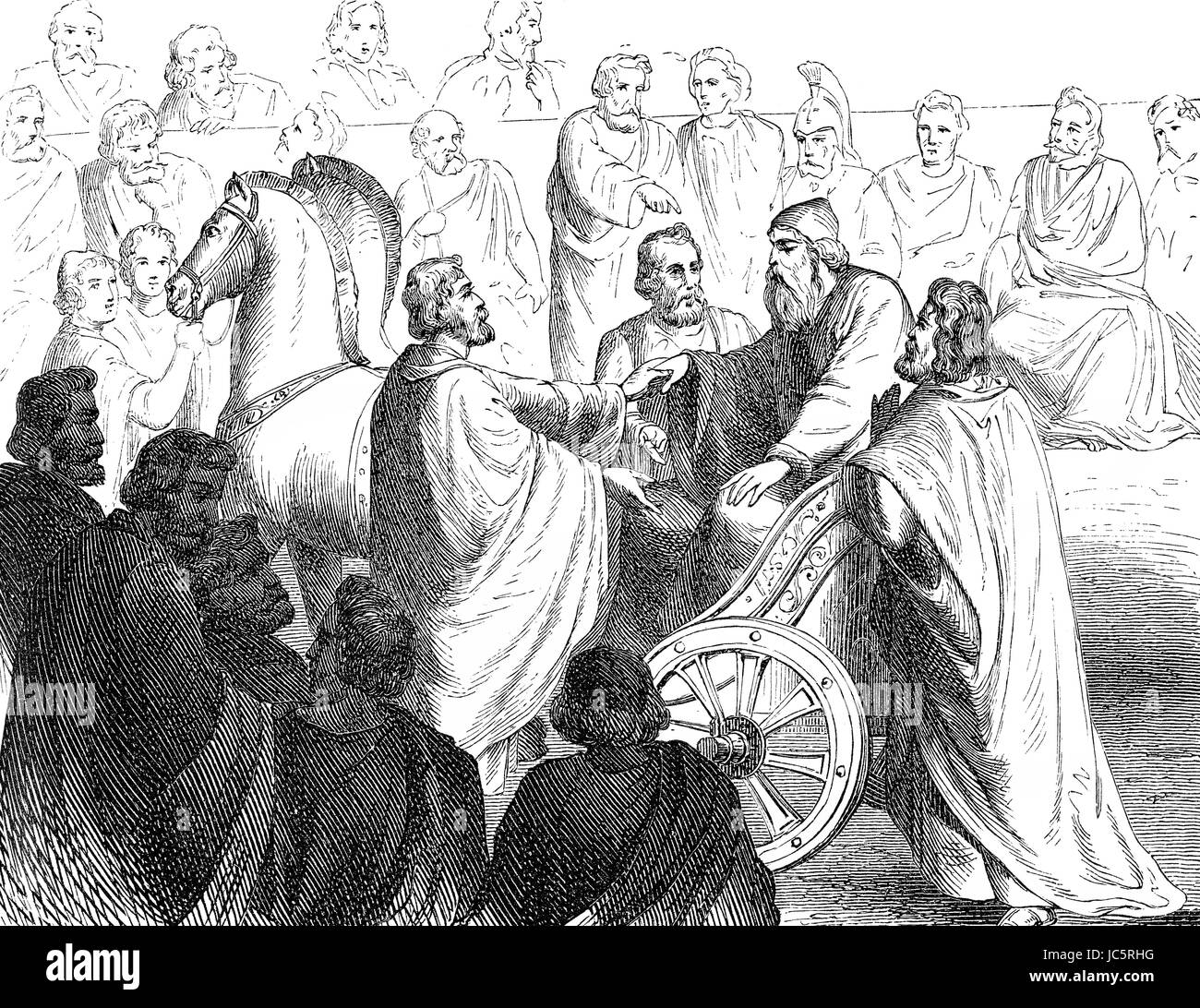 The blind Timoleon, c. 411-337 BC, a Greek statesman and general at Syracuse in the assembly Stock Photohttps://www.alamy.com/image-license-details/?v=1https://www.alamy.com/stock-photo-the-blind-timoleon-c-411-337-bc-a-greek-statesman-and-general-at-syracuse-145187100.html
The blind Timoleon, c. 411-337 BC, a Greek statesman and general at Syracuse in the assembly Stock Photohttps://www.alamy.com/image-license-details/?v=1https://www.alamy.com/stock-photo-the-blind-timoleon-c-411-337-bc-a-greek-statesman-and-general-at-syracuse-145187100.htmlRMJC5RHG–The blind Timoleon, c. 411-337 BC, a Greek statesman and general at Syracuse in the assembly
 EVENTS/ANCIENT ROME Stock Photohttps://www.alamy.com/image-license-details/?v=1https://www.alamy.com/stock-photo-eventsancient-rome-105278264.html
EVENTS/ANCIENT ROME Stock Photohttps://www.alamy.com/image-license-details/?v=1https://www.alamy.com/stock-photo-eventsancient-rome-105278264.htmlRMG37RE0–EVENTS/ANCIENT ROME
 Bronze helmet of Corinthian type. Olympia Archaeological Museum. Ilia Province. Peloponnese region. Stock Photohttps://www.alamy.com/image-license-details/?v=1https://www.alamy.com/stock-photo-bronze-helmet-of-corinthian-type-olympia-archaeological-museum-ilia-29743259.html
Bronze helmet of Corinthian type. Olympia Archaeological Museum. Ilia Province. Peloponnese region. Stock Photohttps://www.alamy.com/image-license-details/?v=1https://www.alamy.com/stock-photo-bronze-helmet-of-corinthian-type-olympia-archaeological-museum-ilia-29743259.htmlRMBMAWR7–Bronze helmet of Corinthian type. Olympia Archaeological Museum. Ilia Province. Peloponnese region.
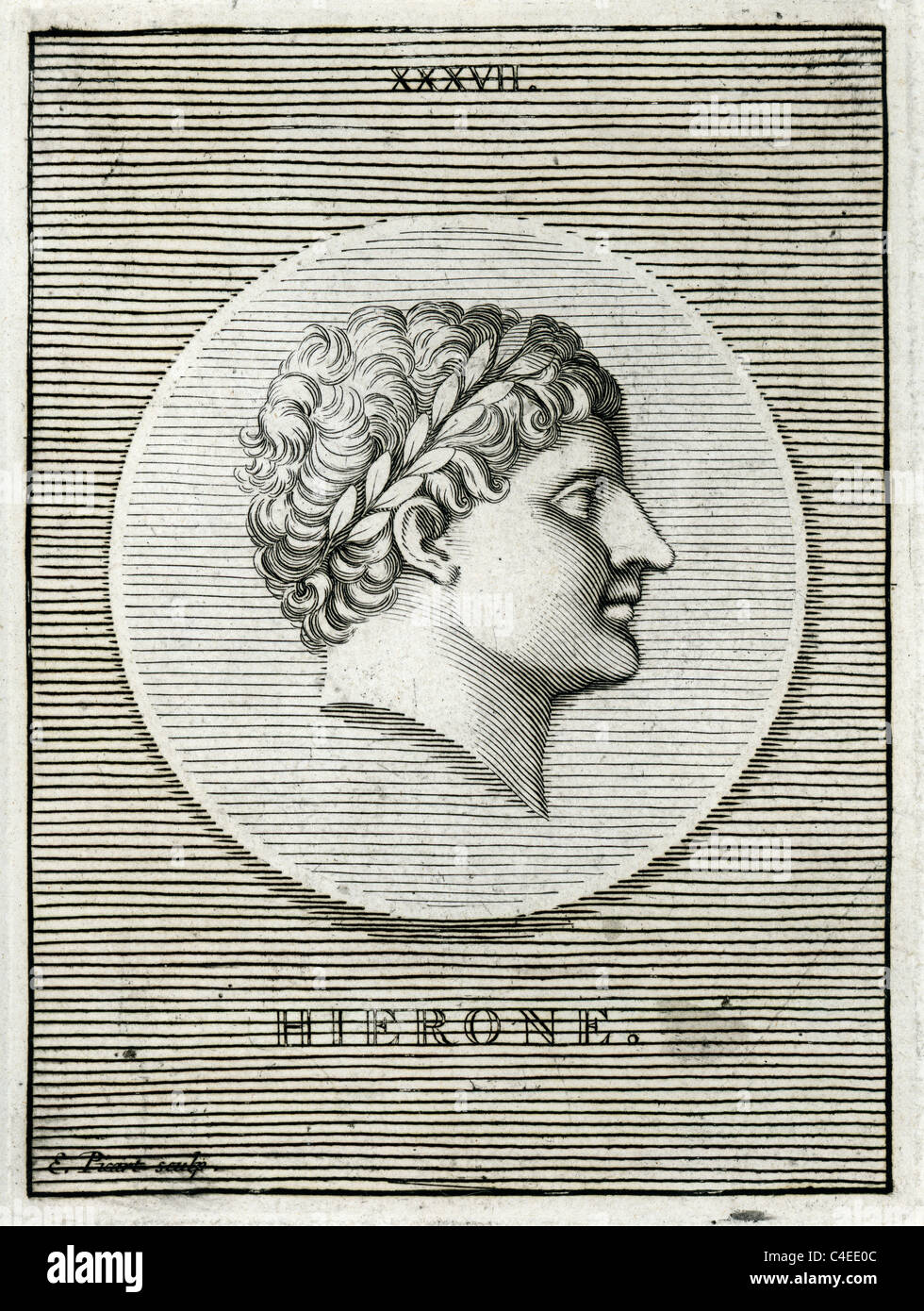 Classical portrait of Hieron II, king of Syracuse from 270 to 215 BC. He was a former general of Pyrrhus of Epirus Stock Photohttps://www.alamy.com/image-license-details/?v=1https://www.alamy.com/stock-photo-classical-portrait-of-hieron-ii-king-of-syracuse-from-270-to-215-bc-37197676.html
Classical portrait of Hieron II, king of Syracuse from 270 to 215 BC. He was a former general of Pyrrhus of Epirus Stock Photohttps://www.alamy.com/image-license-details/?v=1https://www.alamy.com/stock-photo-classical-portrait-of-hieron-ii-king-of-syracuse-from-270-to-215-bc-37197676.htmlRMC4EE0C–Classical portrait of Hieron II, king of Syracuse from 270 to 215 BC. He was a former general of Pyrrhus of Epirus
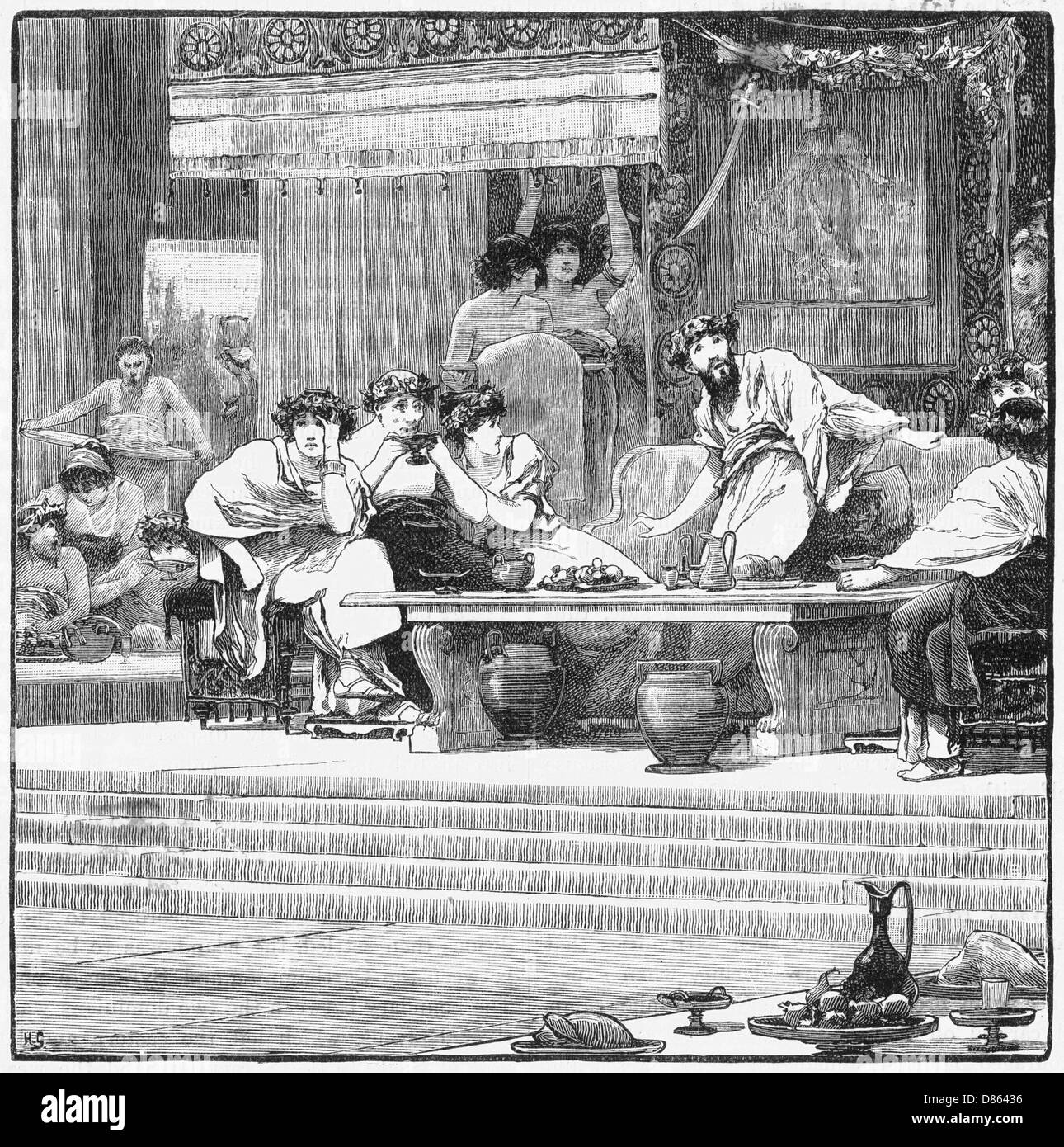 Damocles dines with a sword hanging over his head Stock Photohttps://www.alamy.com/image-license-details/?v=1https://www.alamy.com/stock-photo-damocles-dines-with-a-sword-hanging-over-his-head-56683290.html
Damocles dines with a sword hanging over his head Stock Photohttps://www.alamy.com/image-license-details/?v=1https://www.alamy.com/stock-photo-damocles-dines-with-a-sword-hanging-over-his-head-56683290.htmlRMD86436–Damocles dines with a sword hanging over his head
 Pyrrhus (318-272 BC). King of Epirus. Roman bust of the 1st century. Copy of an original dated in 290 BC. Great Perystile. Marble. Villa of the Papyri, Herculaneum. National Archaeological Museum. Naples. Italy. Stock Photohttps://www.alamy.com/image-license-details/?v=1https://www.alamy.com/stock-image-pyrrhus-318-272-bc-king-of-epirus-roman-bust-of-the-1st-century-copy-166844645.html
Pyrrhus (318-272 BC). King of Epirus. Roman bust of the 1st century. Copy of an original dated in 290 BC. Great Perystile. Marble. Villa of the Papyri, Herculaneum. National Archaeological Museum. Naples. Italy. Stock Photohttps://www.alamy.com/image-license-details/?v=1https://www.alamy.com/stock-image-pyrrhus-318-272-bc-king-of-epirus-roman-bust-of-the-1st-century-copy-166844645.htmlRMKKCC19–Pyrrhus (318-272 BC). King of Epirus. Roman bust of the 1st century. Copy of an original dated in 290 BC. Great Perystile. Marble. Villa of the Papyri, Herculaneum. National Archaeological Museum. Naples. Italy.
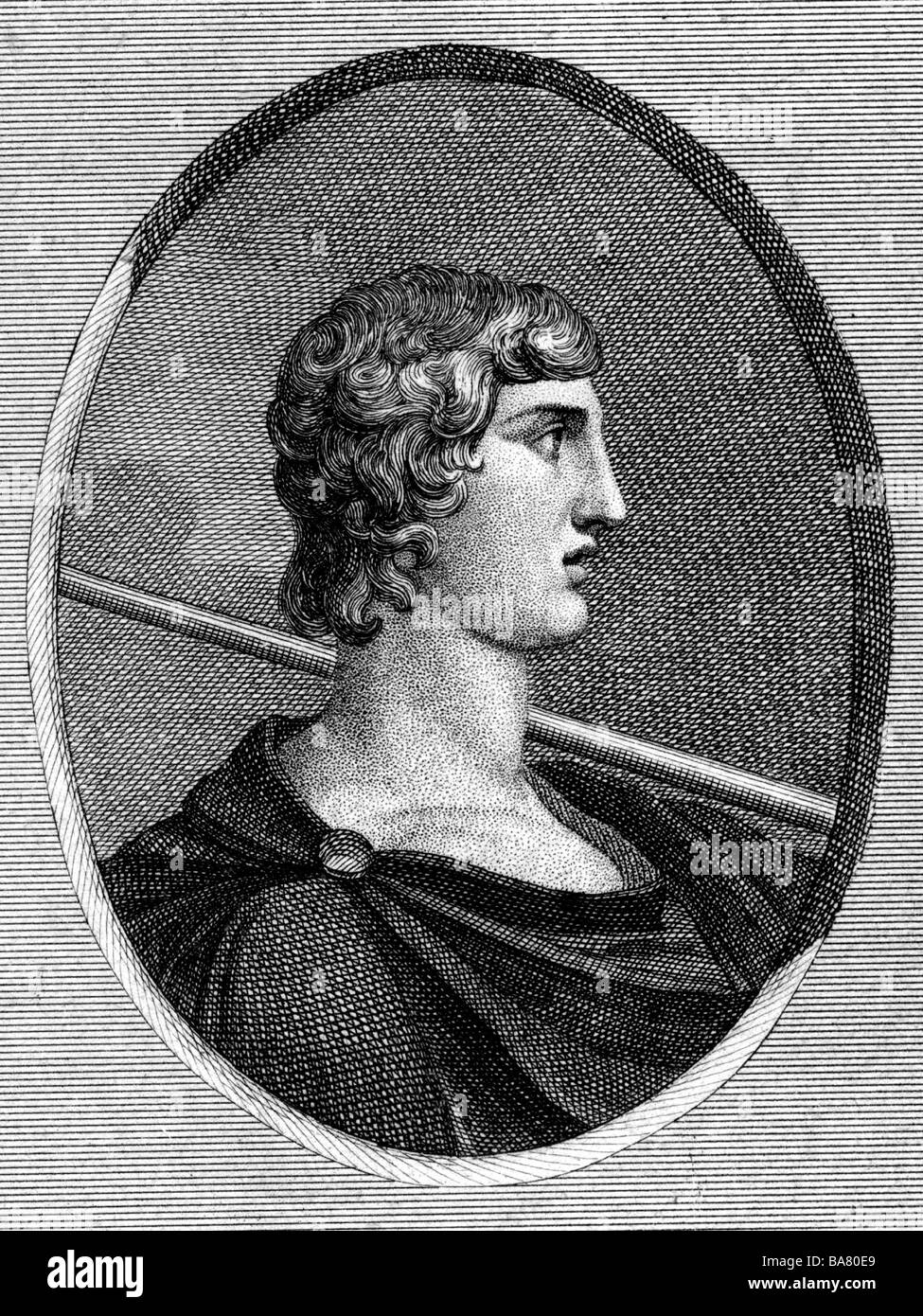 Agathocles, 360 - 289 BC, tyrant of Syracuse since 316, king since 304, portrait, side view, copper engraving, circa 18th century, probably after contemporary image, Artist's Copyright has not to be cleared Stock Photohttps://www.alamy.com/image-license-details/?v=1https://www.alamy.com/stock-photo-agathocles-360-289-bc-tyrant-of-syracuse-since-316-king-since-304-23532945.html
Agathocles, 360 - 289 BC, tyrant of Syracuse since 316, king since 304, portrait, side view, copper engraving, circa 18th century, probably after contemporary image, Artist's Copyright has not to be cleared Stock Photohttps://www.alamy.com/image-license-details/?v=1https://www.alamy.com/stock-photo-agathocles-360-289-bc-tyrant-of-syracuse-since-316-king-since-304-23532945.htmlRMBA80E9–Agathocles, 360 - 289 BC, tyrant of Syracuse since 316, king since 304, portrait, side view, copper engraving, circa 18th century, probably after contemporary image, Artist's Copyright has not to be cleared
 The massive stone-built Euralio castle which was built to defend Syracuse is riddled by underground passageways. Stock Photohttps://www.alamy.com/image-license-details/?v=1https://www.alamy.com/the-massive-stone-built-euralio-castle-which-was-built-to-defend-syracuse-image5330968.html
The massive stone-built Euralio castle which was built to defend Syracuse is riddled by underground passageways. Stock Photohttps://www.alamy.com/image-license-details/?v=1https://www.alamy.com/the-massive-stone-built-euralio-castle-which-was-built-to-defend-syracuse-image5330968.htmlRMATJG19–The massive stone-built Euralio castle which was built to defend Syracuse is riddled by underground passageways.
 Hiero I, circa 540/525 - 466 BC, Tyrant of Syracuse 478 - 466, portrait, copper engraving, circa 18th century, , Artist's Copyright has not to be cleared Stock Photohttps://www.alamy.com/image-license-details/?v=1https://www.alamy.com/stock-photo-hiero-i-circa-540525-466-bc-tyrant-of-syracuse-478-466-portrait-copper-20239203.html
Hiero I, circa 540/525 - 466 BC, Tyrant of Syracuse 478 - 466, portrait, copper engraving, circa 18th century, , Artist's Copyright has not to be cleared Stock Photohttps://www.alamy.com/image-license-details/?v=1https://www.alamy.com/stock-photo-hiero-i-circa-540525-466-bc-tyrant-of-syracuse-478-466-portrait-copper-20239203.htmlRMB4WY8K–Hiero I, circa 540/525 - 466 BC, Tyrant of Syracuse 478 - 466, portrait, copper engraving, circa 18th century, , Artist's Copyright has not to be cleared
RM2T68EXE–Hieronymus, tyrant of Syracuse, 231214 BC. He succeeded his grandfather, Hiero II, in 215 BC when only 15 years old. Assassinated by Deinomenes after 13 months. From a bronze coin with head of young man wearing a royal diadem. Hieronimo. Copperplate engraving by Etienne Picart after Giovanni Angelo Canini from Iconografia, cioe disegni d'imagini de famosissimi monarchi, regi, filososi, poeti ed oratori dell' Antichita, Drawings of images of famous monarchs, kings, philosophers, poets and orators of Antiquity, Ignatio deLazari, Rome, 1699.
RM2P738AJ–Hieronymus, tyrant of Syracuse, 231–214 BC. He succeeded his grandfather, Hiero II, in 215 BC when only 15 years old. Assassinated by Deinomenes after 13 months. From a coin with head of young man wearing a royal diadem. Hieronimo. Copperplate engraving by Etienne Picart after Giovanni Angelo Canini from Iconografia, cioe disegni d'imagini de famosissimi monarchi, regi, filososi, poeti ed oratori dell' Antichita, Drawings of images of famous monarchs, kings, philosophers, poets and orators of Antiquity, Ignatio de’Lazari, Rome, 1699.
 Enormus altar almost 650 feet long built by the tryant Hieron II in the 3rd century BC for public sacrifices, supposedly able t Stock Photohttps://www.alamy.com/image-license-details/?v=1https://www.alamy.com/stock-photo-enormus-altar-almost-650-feet-long-built-by-the-tryant-hieron-ii-in-37202881.html
Enormus altar almost 650 feet long built by the tryant Hieron II in the 3rd century BC for public sacrifices, supposedly able t Stock Photohttps://www.alamy.com/image-license-details/?v=1https://www.alamy.com/stock-photo-enormus-altar-almost-650-feet-long-built-by-the-tryant-hieron-ii-in-37202881.htmlRMC4EMJ9–Enormus altar almost 650 feet long built by the tryant Hieron II in the 3rd century BC for public sacrifices, supposedly able t
 Hieron I, Tyrant of Syracuse, Sicily, who sided with the Cumaeans in their battle against the Etruscans at the Battle of Cumae 474 BC Hiero. Copperplate engraving by Pieter Bodart (1676-1712) from Henricus Spoor’s Deorum et Heroum, Virorum et Mulierum Illustrium Imagines Antiquae Illustatae, Gods and Heroes, Men and Women, Illustrated with Antique Images, Petrum, Amsterdam, 1715. First published as Favissæ utriusque antiquitatis tam Romanæ quam Græcæ in 1707. Henricus Spoor was a Dutch physician, classical scholar, poet and writer, fl. 1694-1716. Stock Photohttps://www.alamy.com/image-license-details/?v=1https://www.alamy.com/hieron-i-tyrant-of-syracuse-sicily-who-sided-with-the-cumaeans-in-their-battle-against-the-etruscans-at-the-battle-of-cumae-474-bc-hiero-copperplate-engraving-by-pieter-bodart-1676-1712-from-henricus-spoors-deorum-et-heroum-virorum-et-mulierum-illustrium-imagines-antiquae-illustatae-gods-and-heroes-men-and-women-illustrated-with-antique-images-petrum-amsterdam-1715-first-published-as-faviss-utriusque-antiquitatis-tam-roman-quam-grc-in-1707-henricus-spoor-was-a-dutch-physician-classical-scholar-poet-and-writer-fl-1694-1716-image433381478.html
Hieron I, Tyrant of Syracuse, Sicily, who sided with the Cumaeans in their battle against the Etruscans at the Battle of Cumae 474 BC Hiero. Copperplate engraving by Pieter Bodart (1676-1712) from Henricus Spoor’s Deorum et Heroum, Virorum et Mulierum Illustrium Imagines Antiquae Illustatae, Gods and Heroes, Men and Women, Illustrated with Antique Images, Petrum, Amsterdam, 1715. First published as Favissæ utriusque antiquitatis tam Romanæ quam Græcæ in 1707. Henricus Spoor was a Dutch physician, classical scholar, poet and writer, fl. 1694-1716. Stock Photohttps://www.alamy.com/image-license-details/?v=1https://www.alamy.com/hieron-i-tyrant-of-syracuse-sicily-who-sided-with-the-cumaeans-in-their-battle-against-the-etruscans-at-the-battle-of-cumae-474-bc-hiero-copperplate-engraving-by-pieter-bodart-1676-1712-from-henricus-spoors-deorum-et-heroum-virorum-et-mulierum-illustrium-imagines-antiquae-illustatae-gods-and-heroes-men-and-women-illustrated-with-antique-images-petrum-amsterdam-1715-first-published-as-faviss-utriusque-antiquitatis-tam-roman-quam-grc-in-1707-henricus-spoor-was-a-dutch-physician-classical-scholar-poet-and-writer-fl-1694-1716-image433381478.htmlRM2G526DX–Hieron I, Tyrant of Syracuse, Sicily, who sided with the Cumaeans in their battle against the Etruscans at the Battle of Cumae 474 BC Hiero. Copperplate engraving by Pieter Bodart (1676-1712) from Henricus Spoor’s Deorum et Heroum, Virorum et Mulierum Illustrium Imagines Antiquae Illustatae, Gods and Heroes, Men and Women, Illustrated with Antique Images, Petrum, Amsterdam, 1715. First published as Favissæ utriusque antiquitatis tam Romanæ quam Græcæ in 1707. Henricus Spoor was a Dutch physician, classical scholar, poet and writer, fl. 1694-1716.
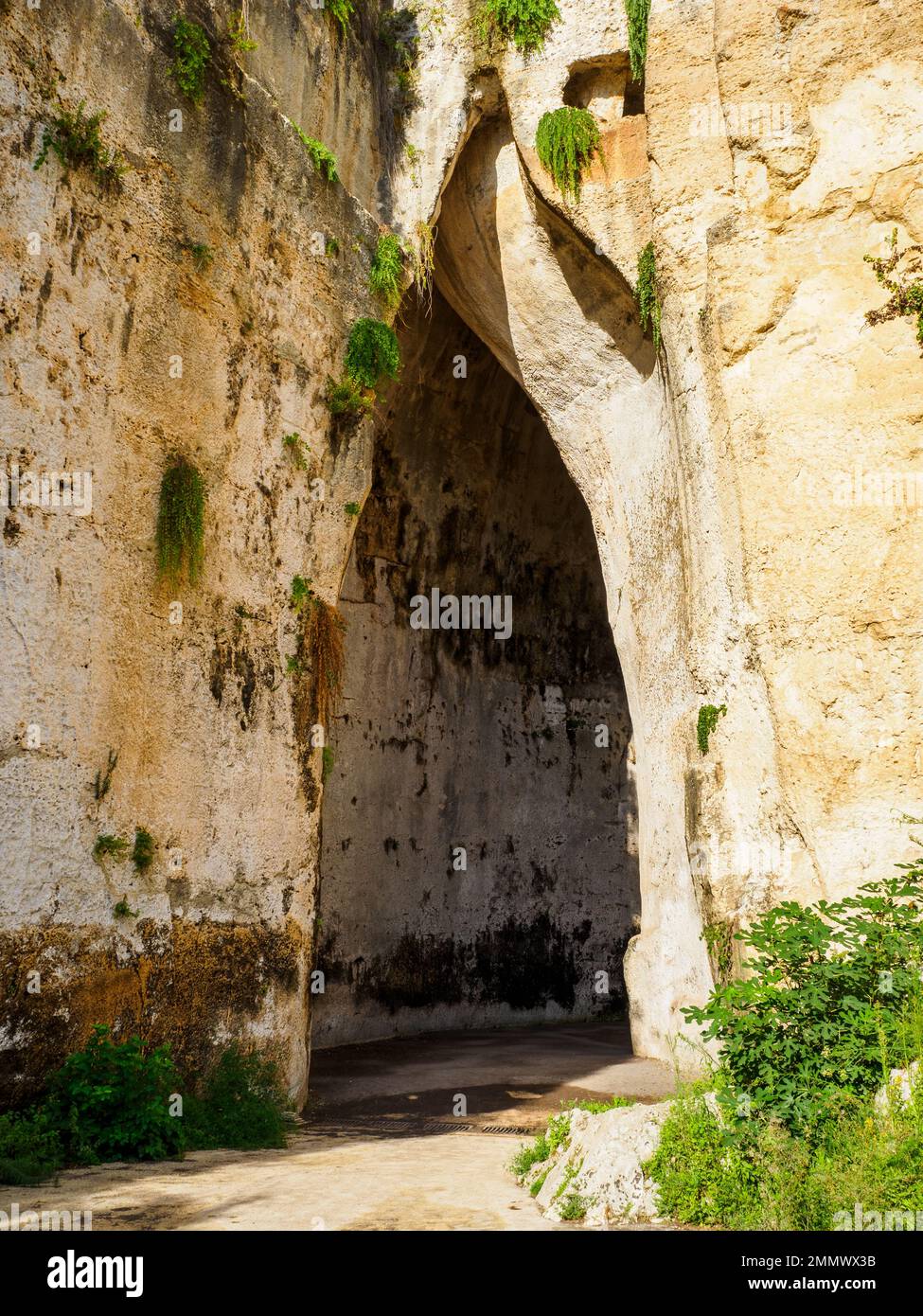 Ear of Dionysius - Neapolis Archaeological Park - Syracuse, Sicily, Italy This name was given to it by Caravaggio, because when he saw it and knew the story that linked it to the tyrant Dionysius I of Syracuse, who secretly heard what his prisoners were saying from inside the latomia, he thought that the name of 'Ear ', given its history and shape similar to an immense auricle, was really appropriate Stock Photohttps://www.alamy.com/image-license-details/?v=1https://www.alamy.com/ear-of-dionysius-neapolis-archaeological-park-syracuse-sicily-italy-this-name-was-given-to-it-by-caravaggio-because-when-he-saw-it-and-knew-the-story-that-linked-it-to-the-tyrant-dionysius-i-of-syracuse-who-secretly-heard-what-his-prisoners-were-saying-from-inside-the-latomia-he-thought-that-the-name-of-ear-given-its-history-and-shape-similar-to-an-immense-auricle-was-really-appropriate-image511963071.html
Ear of Dionysius - Neapolis Archaeological Park - Syracuse, Sicily, Italy This name was given to it by Caravaggio, because when he saw it and knew the story that linked it to the tyrant Dionysius I of Syracuse, who secretly heard what his prisoners were saying from inside the latomia, he thought that the name of 'Ear ', given its history and shape similar to an immense auricle, was really appropriate Stock Photohttps://www.alamy.com/image-license-details/?v=1https://www.alamy.com/ear-of-dionysius-neapolis-archaeological-park-syracuse-sicily-italy-this-name-was-given-to-it-by-caravaggio-because-when-he-saw-it-and-knew-the-story-that-linked-it-to-the-tyrant-dionysius-i-of-syracuse-who-secretly-heard-what-his-prisoners-were-saying-from-inside-the-latomia-he-thought-that-the-name-of-ear-given-its-history-and-shape-similar-to-an-immense-auricle-was-really-appropriate-image511963071.htmlRM2MMWX3B–Ear of Dionysius - Neapolis Archaeological Park - Syracuse, Sicily, Italy This name was given to it by Caravaggio, because when he saw it and knew the story that linked it to the tyrant Dionysius I of Syracuse, who secretly heard what his prisoners were saying from inside the latomia, he thought that the name of 'Ear ', given its history and shape similar to an immense auricle, was really appropriate
 The standard operas, their plots and their music; . 83, under the direction of Signor Vianesi.The libretto is partly based upon Victor Hugos drama, Angelo, the Tyrant of Syracuse. The scene is laid in Venice in the seventeenth century.The first act, called The Lions Mouth, opens in the court-yard of the Ducal Palace, upon a great festivity. After thelively regatta chorus ( Feste e pane ), and the departureof the crowd to see the sports, Barnaba, the Inquisitions spy,is left alone. He sings a monologue ( E danzan su lorTombe ), which contains a motive that follows him throughout.From this monol Stock Photohttps://www.alamy.com/image-license-details/?v=1https://www.alamy.com/the-standard-operas-their-plots-and-their-music-83-under-the-direction-of-signor-vianesithe-libretto-is-partly-based-upon-victor-hugos-drama-angelo-the-tyrant-of-syracuse-the-scene-is-laid-in-venice-in-the-seventeenth-centurythe-first-act-called-the-lions-mouth-opens-in-the-court-yard-of-the-ducal-palace-upon-a-great-festivity-after-thelively-regatta-chorus-feste-e-pane-and-the-departureof-the-crowd-to-see-the-sports-barnaba-the-inquisitions-spyis-left-alone-he-sings-a-monologue-e-danzan-su-lortombe-which-contains-a-motive-that-follows-him-throughoutfrom-this-monol-image340149095.html
The standard operas, their plots and their music; . 83, under the direction of Signor Vianesi.The libretto is partly based upon Victor Hugos drama, Angelo, the Tyrant of Syracuse. The scene is laid in Venice in the seventeenth century.The first act, called The Lions Mouth, opens in the court-yard of the Ducal Palace, upon a great festivity. After thelively regatta chorus ( Feste e pane ), and the departureof the crowd to see the sports, Barnaba, the Inquisitions spy,is left alone. He sings a monologue ( E danzan su lorTombe ), which contains a motive that follows him throughout.From this monol Stock Photohttps://www.alamy.com/image-license-details/?v=1https://www.alamy.com/the-standard-operas-their-plots-and-their-music-83-under-the-direction-of-signor-vianesithe-libretto-is-partly-based-upon-victor-hugos-drama-angelo-the-tyrant-of-syracuse-the-scene-is-laid-in-venice-in-the-seventeenth-centurythe-first-act-called-the-lions-mouth-opens-in-the-court-yard-of-the-ducal-palace-upon-a-great-festivity-after-thelively-regatta-chorus-feste-e-pane-and-the-departureof-the-crowd-to-see-the-sports-barnaba-the-inquisitions-spyis-left-alone-he-sings-a-monologue-e-danzan-su-lortombe-which-contains-a-motive-that-follows-him-throughoutfrom-this-monol-image340149095.htmlRM2ANB3HY–The standard operas, their plots and their music; . 83, under the direction of Signor Vianesi.The libretto is partly based upon Victor Hugos drama, Angelo, the Tyrant of Syracuse. The scene is laid in Venice in the seventeenth century.The first act, called The Lions Mouth, opens in the court-yard of the Ducal Palace, upon a great festivity. After thelively regatta chorus ( Feste e pane ), and the departureof the crowd to see the sports, Barnaba, the Inquisitions spy,is left alone. He sings a monologue ( E danzan su lorTombe ), which contains a motive that follows him throughout.From this monol
 Ancient Greek archaeological sites in Syracuse, Sicily, Italy. Summer. Stock Photohttps://www.alamy.com/image-license-details/?v=1https://www.alamy.com/stock-image-ancient-greek-archaeological-sites-in-syracuse-sicily-italy-summer-163090048.html
Ancient Greek archaeological sites in Syracuse, Sicily, Italy. Summer. Stock Photohttps://www.alamy.com/image-license-details/?v=1https://www.alamy.com/stock-image-ancient-greek-archaeological-sites-in-syracuse-sicily-italy-summer-163090048.htmlRFKD9B0G–Ancient Greek archaeological sites in Syracuse, Sicily, Italy. Summer.
 Classical portrait of Hieron II, king of Syracuse from 270 to 215 BC. He was a former general of Pyrrhus of Epirus Stock Photohttps://www.alamy.com/image-license-details/?v=1https://www.alamy.com/stock-photo-classical-portrait-of-hieron-ii-king-of-syracuse-from-270-to-215-bc-37197715.html
Classical portrait of Hieron II, king of Syracuse from 270 to 215 BC. He was a former general of Pyrrhus of Epirus Stock Photohttps://www.alamy.com/image-license-details/?v=1https://www.alamy.com/stock-photo-classical-portrait-of-hieron-ii-king-of-syracuse-from-270-to-215-bc-37197715.htmlRMC4EE1R–Classical portrait of Hieron II, king of Syracuse from 270 to 215 BC. He was a former general of Pyrrhus of Epirus
 Tourists in the ruins of the ancient Greek fort of Castello Eurialo on the outskirts of Syracuse, Sicily, Italy Stock Photohttps://www.alamy.com/image-license-details/?v=1https://www.alamy.com/tourists-in-the-ruins-of-the-ancient-greek-fort-of-castello-eurialo-image5331178.html
Tourists in the ruins of the ancient Greek fort of Castello Eurialo on the outskirts of Syracuse, Sicily, Italy Stock Photohttps://www.alamy.com/image-license-details/?v=1https://www.alamy.com/tourists-in-the-ruins-of-the-ancient-greek-fort-of-castello-eurialo-image5331178.htmlRMATJGEB–Tourists in the ruins of the ancient Greek fort of Castello Eurialo on the outskirts of Syracuse, Sicily, Italy
 Dion of Syracuse (408-354 B.C). Tyrant of Syracuse in Sicily (357-354 B.C.). Portrait. Engraving. 16th century. Stock Photohttps://www.alamy.com/image-license-details/?v=1https://www.alamy.com/dion-of-syracuse-408-354-bc-tyrant-of-syracuse-in-sicily-357-354-bc-portrait-engraving-16th-century-image220221081.html
Dion of Syracuse (408-354 B.C). Tyrant of Syracuse in Sicily (357-354 B.C.). Portrait. Engraving. 16th century. Stock Photohttps://www.alamy.com/image-license-details/?v=1https://www.alamy.com/dion-of-syracuse-408-354-bc-tyrant-of-syracuse-in-sicily-357-354-bc-portrait-engraving-16th-century-image220221081.htmlRMPP7X6H–Dion of Syracuse (408-354 B.C). Tyrant of Syracuse in Sicily (357-354 B.C.). Portrait. Engraving. 16th century.
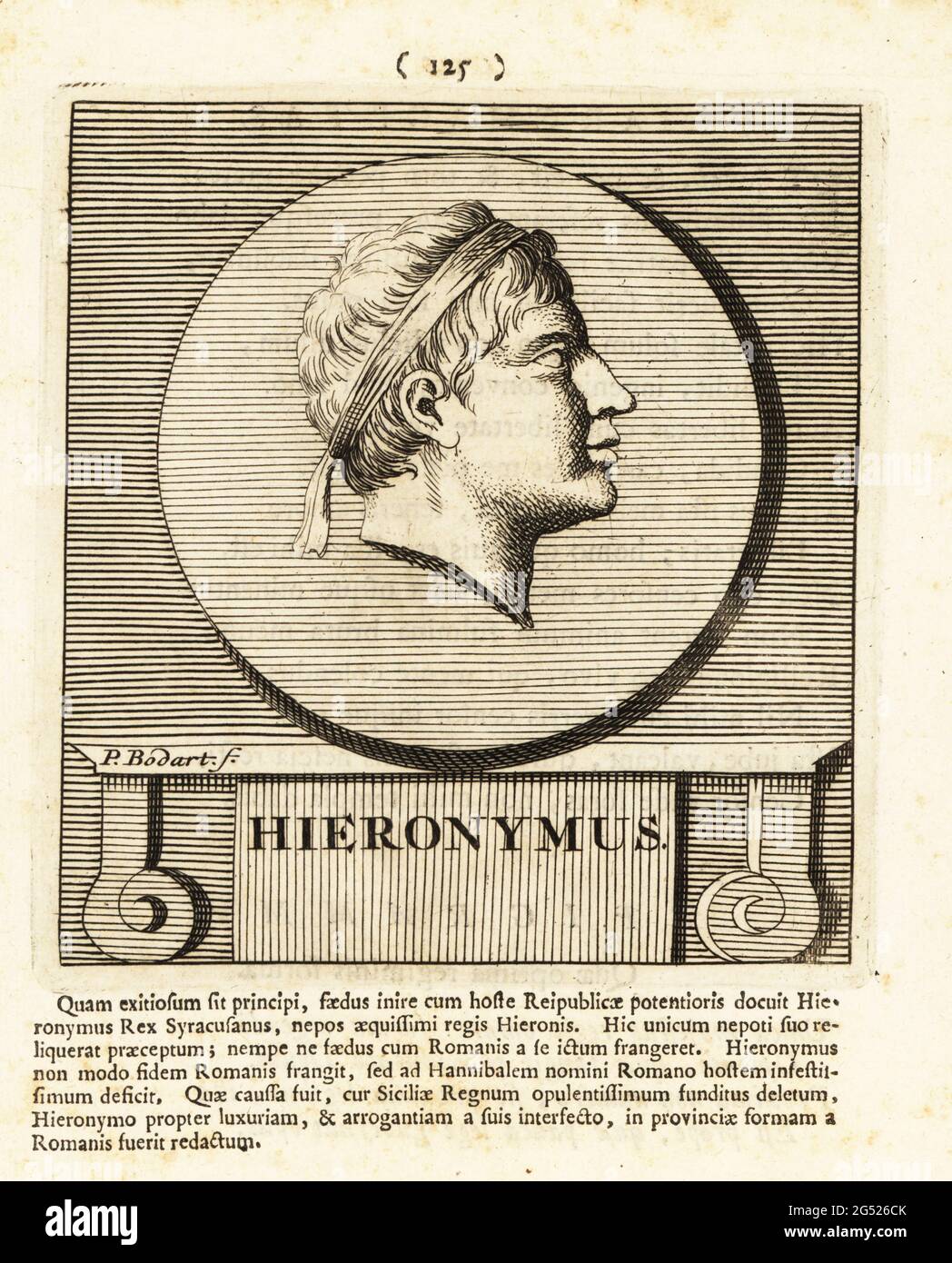 Hieronymus, 231–214 BC, tyrant king of Syracuse, Sicily, who succeeded his grandfather, Hiero II, in 215 BC. Assassinated by Deinomenes in 214 BC. Pictured with a diadem from a coin. Copperplate engraving by Pieter Bodart (1676-1712) from Henricus Spoor’s Deorum et Heroum, Virorum et Mulierum Illustrium Imagines Antiquae Illustatae, Gods and Heroes, Men and Women, Illustrated with Antique Images, Petrum, Amsterdam, 1715. First published as Favissæ utriusque antiquitatis tam Romanæ quam Græcæ in 1707. Henricus Spoor was a Dutch physician, classical scholar, poet and writer, fl. 1694-1716. Stock Photohttps://www.alamy.com/image-license-details/?v=1https://www.alamy.com/hieronymus-231214-bc-tyrant-king-of-syracuse-sicily-who-succeeded-his-grandfather-hiero-ii-in-215-bc-assassinated-by-deinomenes-in-214-bc-pictured-with-a-diadem-from-a-coin-copperplate-engraving-by-pieter-bodart-1676-1712-from-henricus-spoors-deorum-et-heroum-virorum-et-mulierum-illustrium-imagines-antiquae-illustatae-gods-and-heroes-men-and-women-illustrated-with-antique-images-petrum-amsterdam-1715-first-published-as-faviss-utriusque-antiquitatis-tam-roman-quam-grc-in-1707-henricus-spoor-was-a-dutch-physician-classical-scholar-poet-and-writer-fl-1694-1716-image433381443.html
Hieronymus, 231–214 BC, tyrant king of Syracuse, Sicily, who succeeded his grandfather, Hiero II, in 215 BC. Assassinated by Deinomenes in 214 BC. Pictured with a diadem from a coin. Copperplate engraving by Pieter Bodart (1676-1712) from Henricus Spoor’s Deorum et Heroum, Virorum et Mulierum Illustrium Imagines Antiquae Illustatae, Gods and Heroes, Men and Women, Illustrated with Antique Images, Petrum, Amsterdam, 1715. First published as Favissæ utriusque antiquitatis tam Romanæ quam Græcæ in 1707. Henricus Spoor was a Dutch physician, classical scholar, poet and writer, fl. 1694-1716. Stock Photohttps://www.alamy.com/image-license-details/?v=1https://www.alamy.com/hieronymus-231214-bc-tyrant-king-of-syracuse-sicily-who-succeeded-his-grandfather-hiero-ii-in-215-bc-assassinated-by-deinomenes-in-214-bc-pictured-with-a-diadem-from-a-coin-copperplate-engraving-by-pieter-bodart-1676-1712-from-henricus-spoors-deorum-et-heroum-virorum-et-mulierum-illustrium-imagines-antiquae-illustatae-gods-and-heroes-men-and-women-illustrated-with-antique-images-petrum-amsterdam-1715-first-published-as-faviss-utriusque-antiquitatis-tam-roman-quam-grc-in-1707-henricus-spoor-was-a-dutch-physician-classical-scholar-poet-and-writer-fl-1694-1716-image433381443.htmlRM2G526CK–Hieronymus, 231–214 BC, tyrant king of Syracuse, Sicily, who succeeded his grandfather, Hiero II, in 215 BC. Assassinated by Deinomenes in 214 BC. Pictured with a diadem from a coin. Copperplate engraving by Pieter Bodart (1676-1712) from Henricus Spoor’s Deorum et Heroum, Virorum et Mulierum Illustrium Imagines Antiquae Illustatae, Gods and Heroes, Men and Women, Illustrated with Antique Images, Petrum, Amsterdam, 1715. First published as Favissæ utriusque antiquitatis tam Romanæ quam Græcæ in 1707. Henricus Spoor was a Dutch physician, classical scholar, poet and writer, fl. 1694-1716.
 Ear of Dionysius - Neapolis Archaeological Park - Syracuse, Sicily, Italy This name was given to it by Caravaggio, because when he saw it and knew the story that linked it to the tyrant Dionysius I of Syracuse, who secretly heard what his prisoners were saying from inside the latomia, he thought that the name of 'Ear ', given its history and shape similar to an immense auricle, was really appropriate Stock Photohttps://www.alamy.com/image-license-details/?v=1https://www.alamy.com/ear-of-dionysius-neapolis-archaeological-park-syracuse-sicily-italy-this-name-was-given-to-it-by-caravaggio-because-when-he-saw-it-and-knew-the-story-that-linked-it-to-the-tyrant-dionysius-i-of-syracuse-who-secretly-heard-what-his-prisoners-were-saying-from-inside-the-latomia-he-thought-that-the-name-of-ear-given-its-history-and-shape-similar-to-an-immense-auricle-was-really-appropriate-image511966013.html
Ear of Dionysius - Neapolis Archaeological Park - Syracuse, Sicily, Italy This name was given to it by Caravaggio, because when he saw it and knew the story that linked it to the tyrant Dionysius I of Syracuse, who secretly heard what his prisoners were saying from inside the latomia, he thought that the name of 'Ear ', given its history and shape similar to an immense auricle, was really appropriate Stock Photohttps://www.alamy.com/image-license-details/?v=1https://www.alamy.com/ear-of-dionysius-neapolis-archaeological-park-syracuse-sicily-italy-this-name-was-given-to-it-by-caravaggio-because-when-he-saw-it-and-knew-the-story-that-linked-it-to-the-tyrant-dionysius-i-of-syracuse-who-secretly-heard-what-his-prisoners-were-saying-from-inside-the-latomia-he-thought-that-the-name-of-ear-given-its-history-and-shape-similar-to-an-immense-auricle-was-really-appropriate-image511966013.htmlRM2MMX1TD–Ear of Dionysius - Neapolis Archaeological Park - Syracuse, Sicily, Italy This name was given to it by Caravaggio, because when he saw it and knew the story that linked it to the tyrant Dionysius I of Syracuse, who secretly heard what his prisoners were saying from inside the latomia, he thought that the name of 'Ear ', given its history and shape similar to an immense auricle, was really appropriate
RM2P738CJ–Gelon, also known as Gelo, Greek tyrant of the Sicilian cities Gela and Syracuse, died 478 BC. The first of the Deinomenid rulers, son of Deinomenes and brother of Hiero I. Head of a man wearing a royal diadem. Gelone. Copperplate engraving by Guillaume Vallet after Giovanni Angelo Canini from Iconografia, cioe disegni d'imagini de famosissimi monarchi, regi, filososi, poeti ed oratori dell' Antichita, Drawings of images of famous monarchs, kings, philosophers, poets and orators of Antiquity, Ignatio de’Lazari, Rome, 1699.
 Sicily : Phoenician, Greek, And Roman . hes to welcome their deliverer at the gate, thegate of Tcmenites, in the new wall of the elder Diony-sios. There they saw Dion in splendid armour, lead-ing his troops, with his brother Megaklcs and his friendKallippos on each side of him. When he reachedthe gate, he announced by sound of trumpet that Dionand Megakles were come to deliver Syracuse and all DION DELIVERS SYRACUSE. 205 the Greek cities of Sicily from the tyrant. Then hemarched on through Achradina, the people pressingon him on both sides with wreaths and sacrifices anddrink-offerings. At las Stock Photohttps://www.alamy.com/image-license-details/?v=1https://www.alamy.com/sicily-phoenician-greek-and-roman-hes-to-welcome-their-deliverer-at-the-gate-thegate-of-tcmenites-in-the-new-wall-of-the-elder-diony-sios-there-they-saw-dion-in-splendid-armour-lead-ing-his-troops-with-his-brother-megaklcs-and-his-friendkallippos-on-each-side-of-him-when-he-reachedthe-gate-he-announced-by-sound-of-trumpet-that-dionand-megakles-were-come-to-deliver-syracuse-and-all-dion-delivers-syracuse-205-the-greek-cities-of-sicily-from-the-tyrant-then-hemarched-on-through-achradina-the-people-pressingon-him-on-both-sides-with-wreaths-and-sacrifices-anddrink-offerings-at-las-image339989797.html
Sicily : Phoenician, Greek, And Roman . hes to welcome their deliverer at the gate, thegate of Tcmenites, in the new wall of the elder Diony-sios. There they saw Dion in splendid armour, lead-ing his troops, with his brother Megaklcs and his friendKallippos on each side of him. When he reachedthe gate, he announced by sound of trumpet that Dionand Megakles were come to deliver Syracuse and all DION DELIVERS SYRACUSE. 205 the Greek cities of Sicily from the tyrant. Then hemarched on through Achradina, the people pressingon him on both sides with wreaths and sacrifices anddrink-offerings. At las Stock Photohttps://www.alamy.com/image-license-details/?v=1https://www.alamy.com/sicily-phoenician-greek-and-roman-hes-to-welcome-their-deliverer-at-the-gate-thegate-of-tcmenites-in-the-new-wall-of-the-elder-diony-sios-there-they-saw-dion-in-splendid-armour-lead-ing-his-troops-with-his-brother-megaklcs-and-his-friendkallippos-on-each-side-of-him-when-he-reachedthe-gate-he-announced-by-sound-of-trumpet-that-dionand-megakles-were-come-to-deliver-syracuse-and-all-dion-delivers-syracuse-205-the-greek-cities-of-sicily-from-the-tyrant-then-hemarched-on-through-achradina-the-people-pressingon-him-on-both-sides-with-wreaths-and-sacrifices-anddrink-offerings-at-las-image339989797.htmlRM2AN3TCN–Sicily : Phoenician, Greek, And Roman . hes to welcome their deliverer at the gate, thegate of Tcmenites, in the new wall of the elder Diony-sios. There they saw Dion in splendid armour, lead-ing his troops, with his brother Megaklcs and his friendKallippos on each side of him. When he reachedthe gate, he announced by sound of trumpet that Dionand Megakles were come to deliver Syracuse and all DION DELIVERS SYRACUSE. 205 the Greek cities of Sicily from the tyrant. Then hemarched on through Achradina, the people pressingon him on both sides with wreaths and sacrifices anddrink-offerings. At las
 Ancient Greek archaeological sites in Syracuse, Sicily, Italy. Summer. Stock Photohttps://www.alamy.com/image-license-details/?v=1https://www.alamy.com/stock-image-ancient-greek-archaeological-sites-in-syracuse-sicily-italy-summer-163090052.html
Ancient Greek archaeological sites in Syracuse, Sicily, Italy. Summer. Stock Photohttps://www.alamy.com/image-license-details/?v=1https://www.alamy.com/stock-image-ancient-greek-archaeological-sites-in-syracuse-sicily-italy-summer-163090052.htmlRFKD9B0M–Ancient Greek archaeological sites in Syracuse, Sicily, Italy. Summer.
 Tourists in the ruins of the ancient Greek fort of Castello Eurialo on the outskirts of Syracuse, Sicily, Italy Stock Photohttps://www.alamy.com/image-license-details/?v=1https://www.alamy.com/tourists-in-the-ruins-of-the-ancient-greek-fort-of-castello-eurialo-image5331176.html
Tourists in the ruins of the ancient Greek fort of Castello Eurialo on the outskirts of Syracuse, Sicily, Italy Stock Photohttps://www.alamy.com/image-license-details/?v=1https://www.alamy.com/tourists-in-the-ruins-of-the-ancient-greek-fort-of-castello-eurialo-image5331176.htmlRMATJGE9–Tourists in the ruins of the ancient Greek fort of Castello Eurialo on the outskirts of Syracuse, Sicily, Italy
 Dion of Syracuse (408-354 B.C). Tyrant of Syracuse in Sicily (357-354 B.C.). Portrait. Engraving. 16th century. Colored. Stock Photohttps://www.alamy.com/image-license-details/?v=1https://www.alamy.com/dion-of-syracuse-408-354-bc-tyrant-of-syracuse-in-sicily-357-354-bc-portrait-engraving-16th-century-colored-image220259062.html
Dion of Syracuse (408-354 B.C). Tyrant of Syracuse in Sicily (357-354 B.C.). Portrait. Engraving. 16th century. Colored. Stock Photohttps://www.alamy.com/image-license-details/?v=1https://www.alamy.com/dion-of-syracuse-408-354-bc-tyrant-of-syracuse-in-sicily-357-354-bc-portrait-engraving-16th-century-colored-image220259062.htmlRMPP9JK2–Dion of Syracuse (408-354 B.C). Tyrant of Syracuse in Sicily (357-354 B.C.). Portrait. Engraving. 16th century. Colored.
 Ear of Dionysius - Neapolis Archaeological Park - Syracuse, Sicily, Italy This name was given to it by Caravaggio, because when he saw it and knew the story that linked it to the tyrant Dionysius I of Syracuse, who secretly heard what his prisoners were saying from inside the latomia, he thought that the name of 'Ear ', given its history and shape similar to an immense auricle, was really appropriate Stock Photohttps://www.alamy.com/image-license-details/?v=1https://www.alamy.com/ear-of-dionysius-neapolis-archaeological-park-syracuse-sicily-italy-this-name-was-given-to-it-by-caravaggio-because-when-he-saw-it-and-knew-the-story-that-linked-it-to-the-tyrant-dionysius-i-of-syracuse-who-secretly-heard-what-his-prisoners-were-saying-from-inside-the-latomia-he-thought-that-the-name-of-ear-given-its-history-and-shape-similar-to-an-immense-auricle-was-really-appropriate-image511965735.html
Ear of Dionysius - Neapolis Archaeological Park - Syracuse, Sicily, Italy This name was given to it by Caravaggio, because when he saw it and knew the story that linked it to the tyrant Dionysius I of Syracuse, who secretly heard what his prisoners were saying from inside the latomia, he thought that the name of 'Ear ', given its history and shape similar to an immense auricle, was really appropriate Stock Photohttps://www.alamy.com/image-license-details/?v=1https://www.alamy.com/ear-of-dionysius-neapolis-archaeological-park-syracuse-sicily-italy-this-name-was-given-to-it-by-caravaggio-because-when-he-saw-it-and-knew-the-story-that-linked-it-to-the-tyrant-dionysius-i-of-syracuse-who-secretly-heard-what-his-prisoners-were-saying-from-inside-the-latomia-he-thought-that-the-name-of-ear-given-its-history-and-shape-similar-to-an-immense-auricle-was-really-appropriate-image511965735.htmlRM2MMX1EF–Ear of Dionysius - Neapolis Archaeological Park - Syracuse, Sicily, Italy This name was given to it by Caravaggio, because when he saw it and knew the story that linked it to the tyrant Dionysius I of Syracuse, who secretly heard what his prisoners were saying from inside the latomia, he thought that the name of 'Ear ', given its history and shape similar to an immense auricle, was really appropriate
 The ancient world, from the earliest times to 800 AD . COIN OF HiERO II OF SYRACUSE. cenaries, on their way home from service under the tyrant ofSyracuse, seized the city of Messana, murdering all the menand taking possession of their wives and goods. The robberscalled themselves Mamertines ( Sons of Mars ), and for severalyears, from their walled stronghold, they ravaged and plun-dered the northeast corner of Sicily. Now, in 265, they werehard pressed by Hiero II, the ruler of Syracuse, and one fac-tion called in Carthage while another party appealed to Romefor protection. Both Syracuse and C Stock Photohttps://www.alamy.com/image-license-details/?v=1https://www.alamy.com/the-ancient-world-from-the-earliest-times-to-800-ad-coin-of-hiero-ii-of-syracuse-cenaries-on-their-way-home-from-service-under-the-tyrant-ofsyracuse-seized-the-city-of-messana-murdering-all-the-menand-taking-possession-of-their-wives-and-goods-the-robberscalled-themselves-mamertines-sons-of-mars-and-for-severalyears-from-their-walled-stronghold-they-ravaged-and-plun-dered-the-northeast-corner-of-sicily-now-in-265-they-werehard-pressed-by-hiero-ii-the-ruler-of-syracuse-and-one-fac-tion-called-in-carthage-while-another-party-appealed-to-romefor-protection-both-syracuse-and-c-image340055824.html
The ancient world, from the earliest times to 800 AD . COIN OF HiERO II OF SYRACUSE. cenaries, on their way home from service under the tyrant ofSyracuse, seized the city of Messana, murdering all the menand taking possession of their wives and goods. The robberscalled themselves Mamertines ( Sons of Mars ), and for severalyears, from their walled stronghold, they ravaged and plun-dered the northeast corner of Sicily. Now, in 265, they werehard pressed by Hiero II, the ruler of Syracuse, and one fac-tion called in Carthage while another party appealed to Romefor protection. Both Syracuse and C Stock Photohttps://www.alamy.com/image-license-details/?v=1https://www.alamy.com/the-ancient-world-from-the-earliest-times-to-800-ad-coin-of-hiero-ii-of-syracuse-cenaries-on-their-way-home-from-service-under-the-tyrant-ofsyracuse-seized-the-city-of-messana-murdering-all-the-menand-taking-possession-of-their-wives-and-goods-the-robberscalled-themselves-mamertines-sons-of-mars-and-for-severalyears-from-their-walled-stronghold-they-ravaged-and-plun-dered-the-northeast-corner-of-sicily-now-in-265-they-werehard-pressed-by-hiero-ii-the-ruler-of-syracuse-and-one-fac-tion-called-in-carthage-while-another-party-appealed-to-romefor-protection-both-syracuse-and-c-image340055824.htmlRM2AN6TJT–The ancient world, from the earliest times to 800 AD . COIN OF HiERO II OF SYRACUSE. cenaries, on their way home from service under the tyrant ofSyracuse, seized the city of Messana, murdering all the menand taking possession of their wives and goods. The robberscalled themselves Mamertines ( Sons of Mars ), and for severalyears, from their walled stronghold, they ravaged and plun-dered the northeast corner of Sicily. Now, in 265, they werehard pressed by Hiero II, the ruler of Syracuse, and one fac-tion called in Carthage while another party appealed to Romefor protection. Both Syracuse and C
 Tourists in the ruins of the ancient Greek fort of Castello Eurialo on the outskirts of Syracuse, Sicily, Italy Stock Photohttps://www.alamy.com/image-license-details/?v=1https://www.alamy.com/tourists-in-the-ruins-of-the-ancient-greek-fort-of-castello-eurialo-image5331182.html
Tourists in the ruins of the ancient Greek fort of Castello Eurialo on the outskirts of Syracuse, Sicily, Italy Stock Photohttps://www.alamy.com/image-license-details/?v=1https://www.alamy.com/tourists-in-the-ruins-of-the-ancient-greek-fort-of-castello-eurialo-image5331182.htmlRMATJGEF–Tourists in the ruins of the ancient Greek fort of Castello Eurialo on the outskirts of Syracuse, Sicily, Italy
 Bronze helmet of Corinthian type. 5th century b.C. Votive offering in the Sanctuary of Zeus by Hieron, tyrant of Syracuse, and his supporters after victory in Cyme (Italy) against the Etruscans in 474 BC Olympia Archaeological Museum. Ilia Province. Peloponnese region. Stock Photohttps://www.alamy.com/image-license-details/?v=1https://www.alamy.com/bronze-helmet-of-corinthian-type-5th-century-bc-votive-offering-in-the-sanctuary-of-zeus-by-hieron-tyrant-of-syracuse-and-his-supporters-after-victory-in-cyme-italy-against-the-etruscans-in-474-bc-olympia-archaeological-museum-ilia-province-peloponnese-region-image220373322.html
Bronze helmet of Corinthian type. 5th century b.C. Votive offering in the Sanctuary of Zeus by Hieron, tyrant of Syracuse, and his supporters after victory in Cyme (Italy) against the Etruscans in 474 BC Olympia Archaeological Museum. Ilia Province. Peloponnese region. Stock Photohttps://www.alamy.com/image-license-details/?v=1https://www.alamy.com/bronze-helmet-of-corinthian-type-5th-century-bc-votive-offering-in-the-sanctuary-of-zeus-by-hieron-tyrant-of-syracuse-and-his-supporters-after-victory-in-cyme-italy-against-the-etruscans-in-474-bc-olympia-archaeological-museum-ilia-province-peloponnese-region-image220373322.htmlRMPPETBP–Bronze helmet of Corinthian type. 5th century b.C. Votive offering in the Sanctuary of Zeus by Hieron, tyrant of Syracuse, and his supporters after victory in Cyme (Italy) against the Etruscans in 474 BC Olympia Archaeological Museum. Ilia Province. Peloponnese region.
 Ear of Dionysius - Neapolis Archaeological Park - Syracuse, Sicily, Italy This name was given to it by Caravaggio, because when he saw it and knew the story that linked it to the tyrant Dionysius I of Syracuse, who secretly heard what his prisoners were saying from inside the latomia, he thought that the name of 'Ear ', given its history and shape similar to an immense auricle, was really appropriate Stock Photohttps://www.alamy.com/image-license-details/?v=1https://www.alamy.com/ear-of-dionysius-neapolis-archaeological-park-syracuse-sicily-italy-this-name-was-given-to-it-by-caravaggio-because-when-he-saw-it-and-knew-the-story-that-linked-it-to-the-tyrant-dionysius-i-of-syracuse-who-secretly-heard-what-his-prisoners-were-saying-from-inside-the-latomia-he-thought-that-the-name-of-ear-given-its-history-and-shape-similar-to-an-immense-auricle-was-really-appropriate-image511961710.html
Ear of Dionysius - Neapolis Archaeological Park - Syracuse, Sicily, Italy This name was given to it by Caravaggio, because when he saw it and knew the story that linked it to the tyrant Dionysius I of Syracuse, who secretly heard what his prisoners were saying from inside the latomia, he thought that the name of 'Ear ', given its history and shape similar to an immense auricle, was really appropriate Stock Photohttps://www.alamy.com/image-license-details/?v=1https://www.alamy.com/ear-of-dionysius-neapolis-archaeological-park-syracuse-sicily-italy-this-name-was-given-to-it-by-caravaggio-because-when-he-saw-it-and-knew-the-story-that-linked-it-to-the-tyrant-dionysius-i-of-syracuse-who-secretly-heard-what-his-prisoners-were-saying-from-inside-the-latomia-he-thought-that-the-name-of-ear-given-its-history-and-shape-similar-to-an-immense-auricle-was-really-appropriate-image511961710.htmlRM2MMWTAP–Ear of Dionysius - Neapolis Archaeological Park - Syracuse, Sicily, Italy This name was given to it by Caravaggio, because when he saw it and knew the story that linked it to the tyrant Dionysius I of Syracuse, who secretly heard what his prisoners were saying from inside the latomia, he thought that the name of 'Ear ', given its history and shape similar to an immense auricle, was really appropriate
 Sicily : Phoenician, Greek, And Roman . on Greek soil. Katanehe gave as a dwelling-place to his Italian mercenaries.The Leontines thought it was wise to surrenderquietly, and they fared better. Leontinoi again ceasedto be a separate city, and became once more a mereSyracusan outpost. But its people were not sold.They were taken to Syracuse and received citizenship,such citizenship as was where Dionysios was tyrant. Thus was Hellas cut short in a way which hadnever before been known in Sicily. Greek rulershad destroyed Greek cities. Barbarians had occupiedGreek cities. But no Greek as yet had h Stock Photohttps://www.alamy.com/image-license-details/?v=1https://www.alamy.com/sicily-phoenician-greek-and-roman-on-greek-soil-katanehe-gave-as-a-dwelling-place-to-his-italian-mercenariesthe-leontines-thought-it-was-wise-to-surrenderquietly-and-they-fared-better-leontinoi-again-ceasedto-be-a-separate-city-and-became-once-more-a-meresyracusan-outpost-but-its-people-were-not-soldthey-were-taken-to-syracuse-and-received-citizenshipsuch-citizenship-as-was-where-dionysios-was-tyrant-thus-was-hellas-cut-short-in-a-way-which-hadnever-before-been-known-in-sicily-greek-rulershad-destroyed-greek-cities-barbarians-had-occupiedgreek-cities-but-no-greek-as-yet-had-h-image339993444.html
Sicily : Phoenician, Greek, And Roman . on Greek soil. Katanehe gave as a dwelling-place to his Italian mercenaries.The Leontines thought it was wise to surrenderquietly, and they fared better. Leontinoi again ceasedto be a separate city, and became once more a mereSyracusan outpost. But its people were not sold.They were taken to Syracuse and received citizenship,such citizenship as was where Dionysios was tyrant. Thus was Hellas cut short in a way which hadnever before been known in Sicily. Greek rulershad destroyed Greek cities. Barbarians had occupiedGreek cities. But no Greek as yet had h Stock Photohttps://www.alamy.com/image-license-details/?v=1https://www.alamy.com/sicily-phoenician-greek-and-roman-on-greek-soil-katanehe-gave-as-a-dwelling-place-to-his-italian-mercenariesthe-leontines-thought-it-was-wise-to-surrenderquietly-and-they-fared-better-leontinoi-again-ceasedto-be-a-separate-city-and-became-once-more-a-meresyracusan-outpost-but-its-people-were-not-soldthey-were-taken-to-syracuse-and-received-citizenshipsuch-citizenship-as-was-where-dionysios-was-tyrant-thus-was-hellas-cut-short-in-a-way-which-hadnever-before-been-known-in-sicily-greek-rulershad-destroyed-greek-cities-barbarians-had-occupiedgreek-cities-but-no-greek-as-yet-had-h-image339993444.htmlRM2AN4130–Sicily : Phoenician, Greek, And Roman . on Greek soil. Katanehe gave as a dwelling-place to his Italian mercenaries.The Leontines thought it was wise to surrenderquietly, and they fared better. Leontinoi again ceasedto be a separate city, and became once more a mereSyracusan outpost. But its people were not sold.They were taken to Syracuse and received citizenship,such citizenship as was where Dionysios was tyrant. Thus was Hellas cut short in a way which hadnever before been known in Sicily. Greek rulershad destroyed Greek cities. Barbarians had occupiedGreek cities. But no Greek as yet had h
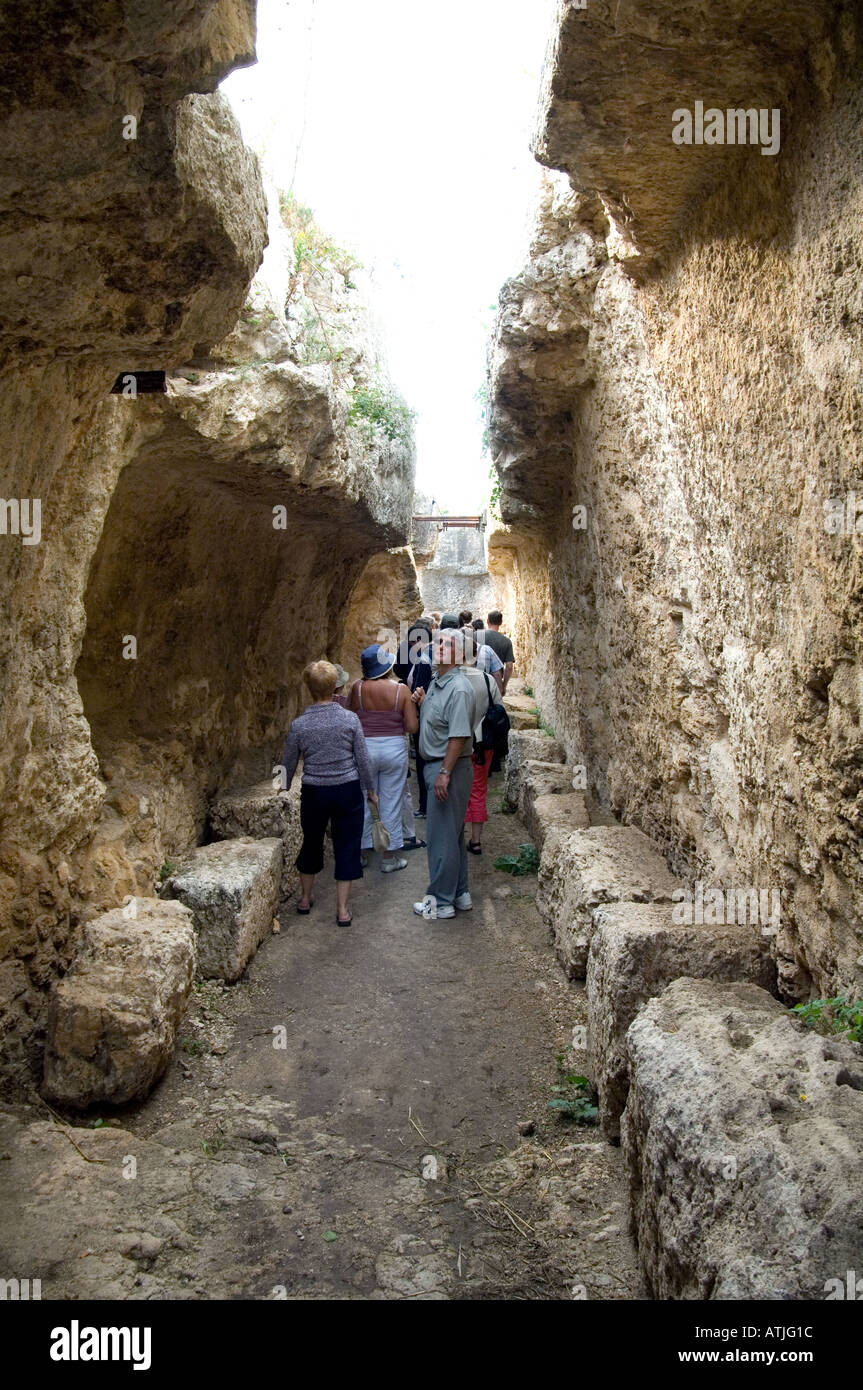 The stone-built Castello Euralio, a huge defensive structure near Syracuse, Sicily, is riddled with underground passageways. Stock Photohttps://www.alamy.com/image-license-details/?v=1https://www.alamy.com/the-stone-built-castello-euralio-a-huge-defensive-structure-near-syracuse-image5330971.html
The stone-built Castello Euralio, a huge defensive structure near Syracuse, Sicily, is riddled with underground passageways. Stock Photohttps://www.alamy.com/image-license-details/?v=1https://www.alamy.com/the-stone-built-castello-euralio-a-huge-defensive-structure-near-syracuse-image5330971.htmlRMATJG1C–The stone-built Castello Euralio, a huge defensive structure near Syracuse, Sicily, is riddled with underground passageways.
 Hieron I, Tyrant of Syracuse, Sicily, who sided with the Cumaeans in their battle against the Etruscans at the Battle of Cumae 474 BC Hiero. Copperplate engraving by Pieter Bodart (1676-1712) from Henricus Spoors Deorum et Heroum, Virorum et Mulierum Illustrium Imagines Antiquae Illustatae, Gods and Heroes, Men and Women, Illustrated with Antique Images, Petrum, Amsterdam, 1715. First published as Favissæ utriusque antiquitatis tam Romanæ quam Græcæ in 1707. Henricus Spoor was a Dutch physician, classical scholar, poet and writer, fl. 1694-1716. Stock Photohttps://www.alamy.com/image-license-details/?v=1https://www.alamy.com/hieron-i-tyrant-of-syracuse-sicily-who-sided-with-the-cumaeans-in-their-battle-against-the-etruscans-at-the-battle-of-cumae-474-bc-hiero-copperplate-engraving-by-pieter-bodart-1676-1712-from-henricus-spoors-deorum-et-heroum-virorum-et-mulierum-illustrium-imagines-antiquae-illustatae-gods-and-heroes-men-and-women-illustrated-with-antique-images-petrum-amsterdam-1715-first-published-as-faviss-utriusque-antiquitatis-tam-roman-quam-grc-in-1707-henricus-spoor-was-a-dutch-physician-classical-scholar-poet-and-writer-fl-1694-1716-image571831647.html
Hieron I, Tyrant of Syracuse, Sicily, who sided with the Cumaeans in their battle against the Etruscans at the Battle of Cumae 474 BC Hiero. Copperplate engraving by Pieter Bodart (1676-1712) from Henricus Spoors Deorum et Heroum, Virorum et Mulierum Illustrium Imagines Antiquae Illustatae, Gods and Heroes, Men and Women, Illustrated with Antique Images, Petrum, Amsterdam, 1715. First published as Favissæ utriusque antiquitatis tam Romanæ quam Græcæ in 1707. Henricus Spoor was a Dutch physician, classical scholar, poet and writer, fl. 1694-1716. Stock Photohttps://www.alamy.com/image-license-details/?v=1https://www.alamy.com/hieron-i-tyrant-of-syracuse-sicily-who-sided-with-the-cumaeans-in-their-battle-against-the-etruscans-at-the-battle-of-cumae-474-bc-hiero-copperplate-engraving-by-pieter-bodart-1676-1712-from-henricus-spoors-deorum-et-heroum-virorum-et-mulierum-illustrium-imagines-antiquae-illustatae-gods-and-heroes-men-and-women-illustrated-with-antique-images-petrum-amsterdam-1715-first-published-as-faviss-utriusque-antiquitatis-tam-roman-quam-grc-in-1707-henricus-spoor-was-a-dutch-physician-classical-scholar-poet-and-writer-fl-1694-1716-image571831647.htmlRM2T6952R–Hieron I, Tyrant of Syracuse, Sicily, who sided with the Cumaeans in their battle against the Etruscans at the Battle of Cumae 474 BC Hiero. Copperplate engraving by Pieter Bodart (1676-1712) from Henricus Spoors Deorum et Heroum, Virorum et Mulierum Illustrium Imagines Antiquae Illustatae, Gods and Heroes, Men and Women, Illustrated with Antique Images, Petrum, Amsterdam, 1715. First published as Favissæ utriusque antiquitatis tam Romanæ quam Græcæ in 1707. Henricus Spoor was a Dutch physician, classical scholar, poet and writer, fl. 1694-1716.
 A gateway in the ruins of the ancient Greek fort of Castello Eurialo on the outskirts of Syracuse, Sicily, Italy Stock Photohttps://www.alamy.com/image-license-details/?v=1https://www.alamy.com/a-gateway-in-the-ruins-of-the-ancient-greek-fort-of-castello-eurialo-image5331186.html
A gateway in the ruins of the ancient Greek fort of Castello Eurialo on the outskirts of Syracuse, Sicily, Italy Stock Photohttps://www.alamy.com/image-license-details/?v=1https://www.alamy.com/a-gateway-in-the-ruins-of-the-ancient-greek-fort-of-castello-eurialo-image5331186.htmlRMATJGF3–A gateway in the ruins of the ancient Greek fort of Castello Eurialo on the outskirts of Syracuse, Sicily, Italy
 Listening to the tourist guide on a high point in Castello Euralio, a huge stone-built defensive structure near Syracuse, Sicily Stock Photohttps://www.alamy.com/image-license-details/?v=1https://www.alamy.com/listening-to-the-tourist-guide-on-a-high-point-in-castello-euralio-image5330962.html
Listening to the tourist guide on a high point in Castello Euralio, a huge stone-built defensive structure near Syracuse, Sicily Stock Photohttps://www.alamy.com/image-license-details/?v=1https://www.alamy.com/listening-to-the-tourist-guide-on-a-high-point-in-castello-euralio-image5330962.htmlRMATJG13–Listening to the tourist guide on a high point in Castello Euralio, a huge stone-built defensive structure near Syracuse, Sicily
 Ear of Dionysius - Neapolis Archaeological Park - Syracuse, Sicily, Italy This name was given to it by Caravaggio, because when he saw it and knew the story that linked it to the tyrant Dionysius I of Syracuse, who secretly heard what his prisoners were saying from inside the latomia, he thought that the name of 'Ear ', given its history and shape similar to an immense auricle, was really appropriate Stock Photohttps://www.alamy.com/image-license-details/?v=1https://www.alamy.com/ear-of-dionysius-neapolis-archaeological-park-syracuse-sicily-italy-this-name-was-given-to-it-by-caravaggio-because-when-he-saw-it-and-knew-the-story-that-linked-it-to-the-tyrant-dionysius-i-of-syracuse-who-secretly-heard-what-his-prisoners-were-saying-from-inside-the-latomia-he-thought-that-the-name-of-ear-given-its-history-and-shape-similar-to-an-immense-auricle-was-really-appropriate-image511966364.html
Ear of Dionysius - Neapolis Archaeological Park - Syracuse, Sicily, Italy This name was given to it by Caravaggio, because when he saw it and knew the story that linked it to the tyrant Dionysius I of Syracuse, who secretly heard what his prisoners were saying from inside the latomia, he thought that the name of 'Ear ', given its history and shape similar to an immense auricle, was really appropriate Stock Photohttps://www.alamy.com/image-license-details/?v=1https://www.alamy.com/ear-of-dionysius-neapolis-archaeological-park-syracuse-sicily-italy-this-name-was-given-to-it-by-caravaggio-because-when-he-saw-it-and-knew-the-story-that-linked-it-to-the-tyrant-dionysius-i-of-syracuse-who-secretly-heard-what-his-prisoners-were-saying-from-inside-the-latomia-he-thought-that-the-name-of-ear-given-its-history-and-shape-similar-to-an-immense-auricle-was-really-appropriate-image511966364.htmlRM2MMX290–Ear of Dionysius - Neapolis Archaeological Park - Syracuse, Sicily, Italy This name was given to it by Caravaggio, because when he saw it and knew the story that linked it to the tyrant Dionysius I of Syracuse, who secretly heard what his prisoners were saying from inside the latomia, he thought that the name of 'Ear ', given its history and shape similar to an immense auricle, was really appropriate
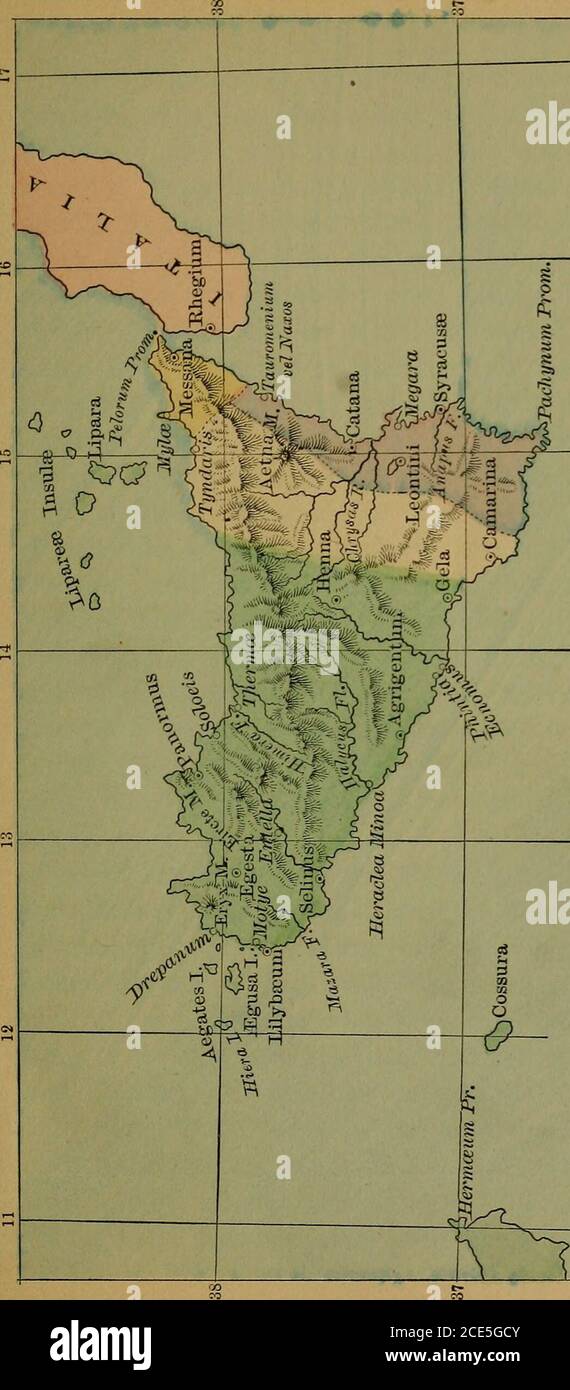 . Rome and Carthage, the Punic wars; . e farthest outpost of theRoman alliance. For more than a century past Greeksand Carthaginians had been contending, with varyingsuccess, for the possession of the island. Few towns ofany importance within its limits had escaped destruction,fewer still had escaped a ^iege, and many had beentaken and retaken almost as many times as there hadbeen campaigns. On the whole, in spite of the effortsof able leaders like Dionysius the Tyrant, Timoleon, andAgathocles, fortune had favored the Carthaginians ; andthe power of Syracuse, the head of the Greek states, wasn Stock Photohttps://www.alamy.com/image-license-details/?v=1https://www.alamy.com/rome-and-carthage-the-punic-wars-e-farthest-outpost-of-theroman-alliance-for-more-than-a-century-past-greeksand-carthaginians-had-been-contending-with-varyingsuccess-for-the-possession-of-the-island-few-towns-ofany-importance-within-its-limits-had-escaped-destructionfewer-still-had-escaped-a-iege-and-many-had-beentaken-and-retaken-almost-as-many-times-as-there-hadbeen-campaigns-on-the-whole-in-spite-of-the-effortsof-able-leaders-like-dionysius-the-tyrant-timoleon-andagathocles-fortune-had-favored-the-carthaginians-andthe-power-of-syracuse-the-head-of-the-greek-states-wasn-image370145579.html
. Rome and Carthage, the Punic wars; . e farthest outpost of theRoman alliance. For more than a century past Greeksand Carthaginians had been contending, with varyingsuccess, for the possession of the island. Few towns ofany importance within its limits had escaped destruction,fewer still had escaped a ^iege, and many had beentaken and retaken almost as many times as there hadbeen campaigns. On the whole, in spite of the effortsof able leaders like Dionysius the Tyrant, Timoleon, andAgathocles, fortune had favored the Carthaginians ; andthe power of Syracuse, the head of the Greek states, wasn Stock Photohttps://www.alamy.com/image-license-details/?v=1https://www.alamy.com/rome-and-carthage-the-punic-wars-e-farthest-outpost-of-theroman-alliance-for-more-than-a-century-past-greeksand-carthaginians-had-been-contending-with-varyingsuccess-for-the-possession-of-the-island-few-towns-ofany-importance-within-its-limits-had-escaped-destructionfewer-still-had-escaped-a-iege-and-many-had-beentaken-and-retaken-almost-as-many-times-as-there-hadbeen-campaigns-on-the-whole-in-spite-of-the-effortsof-able-leaders-like-dionysius-the-tyrant-timoleon-andagathocles-fortune-had-favored-the-carthaginians-andthe-power-of-syracuse-the-head-of-the-greek-states-wasn-image370145579.htmlRM2CE5GCY–. Rome and Carthage, the Punic wars; . e farthest outpost of theRoman alliance. For more than a century past Greeksand Carthaginians had been contending, with varyingsuccess, for the possession of the island. Few towns ofany importance within its limits had escaped destruction,fewer still had escaped a ^iege, and many had beentaken and retaken almost as many times as there hadbeen campaigns. On the whole, in spite of the effortsof able leaders like Dionysius the Tyrant, Timoleon, andAgathocles, fortune had favored the Carthaginians ; andthe power of Syracuse, the head of the Greek states, wasn
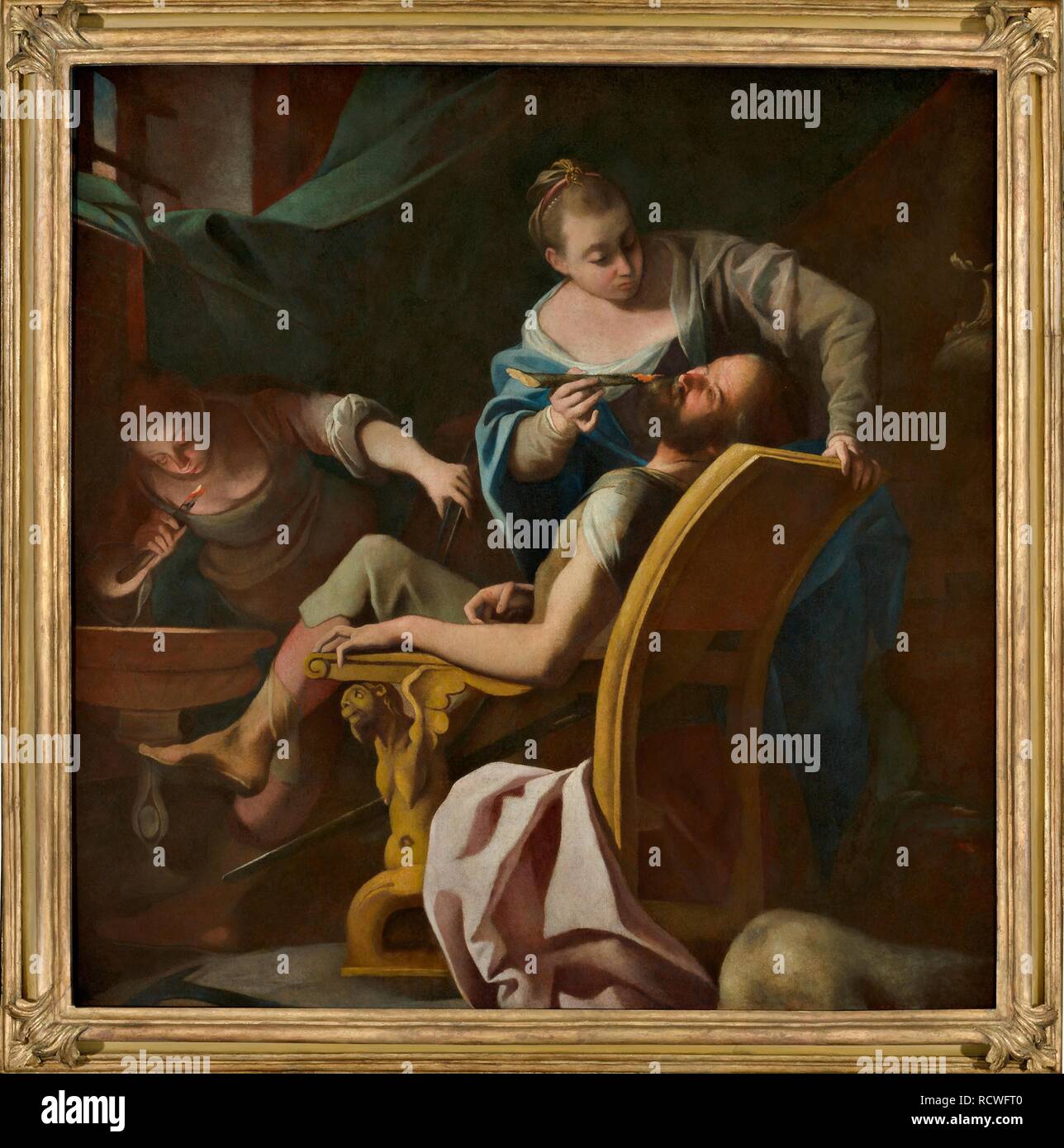 Dionysius, tyrant of Syracuse and his daughters removing his beard. Museum: PRIVATE COLLECTION. Author: Simone Brentana. Stock Photohttps://www.alamy.com/image-license-details/?v=1https://www.alamy.com/dionysius-tyrant-of-syracuse-and-his-daughters-removing-his-beard-museum-private-collection-author-simone-brentana-image231671888.html
Dionysius, tyrant of Syracuse and his daughters removing his beard. Museum: PRIVATE COLLECTION. Author: Simone Brentana. Stock Photohttps://www.alamy.com/image-license-details/?v=1https://www.alamy.com/dionysius-tyrant-of-syracuse-and-his-daughters-removing-his-beard-museum-private-collection-author-simone-brentana-image231671888.htmlRMRCWFT0–Dionysius, tyrant of Syracuse and his daughters removing his beard. Museum: PRIVATE COLLECTION. Author: Simone Brentana.
 Listening to the tourist guide on a high point in Castello Euralio, a huge stone-built defensive structure near Syracuse, Sicily Stock Photohttps://www.alamy.com/image-license-details/?v=1https://www.alamy.com/listening-to-the-tourist-guide-on-a-high-point-in-castello-euralio-image5330964.html
Listening to the tourist guide on a high point in Castello Euralio, a huge stone-built defensive structure near Syracuse, Sicily Stock Photohttps://www.alamy.com/image-license-details/?v=1https://www.alamy.com/listening-to-the-tourist-guide-on-a-high-point-in-castello-euralio-image5330964.htmlRMATJG15–Listening to the tourist guide on a high point in Castello Euralio, a huge stone-built defensive structure near Syracuse, Sicily
 Ear of Dionysius - Neapolis Archaeological Park - Syracuse, Sicily, Italy This name was given to it by Caravaggio, because when he saw it and knew the story that linked it to the tyrant Dionysius I of Syracuse, who secretly heard what his prisoners were saying from inside the latomia, he thought that the name of 'Ear ', given its history and shape similar to an immense auricle, was really appropriate Stock Photohttps://www.alamy.com/image-license-details/?v=1https://www.alamy.com/ear-of-dionysius-neapolis-archaeological-park-syracuse-sicily-italy-this-name-was-given-to-it-by-caravaggio-because-when-he-saw-it-and-knew-the-story-that-linked-it-to-the-tyrant-dionysius-i-of-syracuse-who-secretly-heard-what-his-prisoners-were-saying-from-inside-the-latomia-he-thought-that-the-name-of-ear-given-its-history-and-shape-similar-to-an-immense-auricle-was-really-appropriate-image511966261.html
Ear of Dionysius - Neapolis Archaeological Park - Syracuse, Sicily, Italy This name was given to it by Caravaggio, because when he saw it and knew the story that linked it to the tyrant Dionysius I of Syracuse, who secretly heard what his prisoners were saying from inside the latomia, he thought that the name of 'Ear ', given its history and shape similar to an immense auricle, was really appropriate Stock Photohttps://www.alamy.com/image-license-details/?v=1https://www.alamy.com/ear-of-dionysius-neapolis-archaeological-park-syracuse-sicily-italy-this-name-was-given-to-it-by-caravaggio-because-when-he-saw-it-and-knew-the-story-that-linked-it-to-the-tyrant-dionysius-i-of-syracuse-who-secretly-heard-what-his-prisoners-were-saying-from-inside-the-latomia-he-thought-that-the-name-of-ear-given-its-history-and-shape-similar-to-an-immense-auricle-was-really-appropriate-image511966261.htmlRM2MMX259–Ear of Dionysius - Neapolis Archaeological Park - Syracuse, Sicily, Italy This name was given to it by Caravaggio, because when he saw it and knew the story that linked it to the tyrant Dionysius I of Syracuse, who secretly heard what his prisoners were saying from inside the latomia, he thought that the name of 'Ear ', given its history and shape similar to an immense auricle, was really appropriate
RM2T6CHY6–Gelon, also known as Gelo, Greek tyrant of the Sicilian cities Gela and Syracuse, died 478 BC. The first of the Deinomenid rulers, son of Deinomenes and brother of Hiero I. Head of a man wearing a royal diadem from a bronze medal. Gelone. Copperplate engraving by Guillaume Vallet after Giovanni Angelo Canini from Iconografia, cioe disegni d'imagini de famosissimi monarchi, regi, filososi, poeti ed oratori dell' Antichita, Drawings of images of famous monarchs, kings, philosophers, poets and orators of Antiquity, Ignatio deLazari, Rome, 1699.
 Ear of Dionysius - Neapolis Archaeological Park - Syracuse, Sicily, Italy This name was given to it by Caravaggio, because when he saw it and knew the story that linked it to the tyrant Dionysius I of Syracuse, who secretly heard what his prisoners were saying from inside the latomia, he thought that the name of 'Ear ', given its history and shape similar to an immense auricle, was really appropriate Stock Photohttps://www.alamy.com/image-license-details/?v=1https://www.alamy.com/ear-of-dionysius-neapolis-archaeological-park-syracuse-sicily-italy-this-name-was-given-to-it-by-caravaggio-because-when-he-saw-it-and-knew-the-story-that-linked-it-to-the-tyrant-dionysius-i-of-syracuse-who-secretly-heard-what-his-prisoners-were-saying-from-inside-the-latomia-he-thought-that-the-name-of-ear-given-its-history-and-shape-similar-to-an-immense-auricle-was-really-appropriate-image511966154.html
Ear of Dionysius - Neapolis Archaeological Park - Syracuse, Sicily, Italy This name was given to it by Caravaggio, because when he saw it and knew the story that linked it to the tyrant Dionysius I of Syracuse, who secretly heard what his prisoners were saying from inside the latomia, he thought that the name of 'Ear ', given its history and shape similar to an immense auricle, was really appropriate Stock Photohttps://www.alamy.com/image-license-details/?v=1https://www.alamy.com/ear-of-dionysius-neapolis-archaeological-park-syracuse-sicily-italy-this-name-was-given-to-it-by-caravaggio-because-when-he-saw-it-and-knew-the-story-that-linked-it-to-the-tyrant-dionysius-i-of-syracuse-who-secretly-heard-what-his-prisoners-were-saying-from-inside-the-latomia-he-thought-that-the-name-of-ear-given-its-history-and-shape-similar-to-an-immense-auricle-was-really-appropriate-image511966154.htmlRM2MMX21E–Ear of Dionysius - Neapolis Archaeological Park - Syracuse, Sicily, Italy This name was given to it by Caravaggio, because when he saw it and knew the story that linked it to the tyrant Dionysius I of Syracuse, who secretly heard what his prisoners were saying from inside the latomia, he thought that the name of 'Ear ', given its history and shape similar to an immense auricle, was really appropriate
 Hieronymus, 231214 BC, tyrant king of Syracuse, Sicily, who succeeded his grandfather, Hiero II, in 215 BC. Assassinated by Deinomenes in 214 BC. Pictured with a diadem from a coin. Copperplate engraving by Pieter Bodart (1676-1712) from Henricus Spoors Deorum et Heroum, Virorum et Mulierum Illustrium Imagines Antiquae Illustatae, Gods and Heroes, Men and Women, Illustrated with Antique Images, Petrum, Amsterdam, 1715. First published as Favissæ utriusque antiquitatis tam Romanæ quam Græcæ in 1707. Henricus Spoor was a Dutch physician, classical scholar, poet and writer, fl. 1694-1716. Stock Photohttps://www.alamy.com/image-license-details/?v=1https://www.alamy.com/hieronymus-231214-bc-tyrant-king-of-syracuse-sicily-who-succeeded-his-grandfather-hiero-ii-in-215-bc-assassinated-by-deinomenes-in-214-bc-pictured-with-a-diadem-from-a-coin-copperplate-engraving-by-pieter-bodart-1676-1712-from-henricus-spoors-deorum-et-heroum-virorum-et-mulierum-illustrium-imagines-antiquae-illustatae-gods-and-heroes-men-and-women-illustrated-with-antique-images-petrum-amsterdam-1715-first-published-as-faviss-utriusque-antiquitatis-tam-roman-quam-grc-in-1707-henricus-spoor-was-a-dutch-physician-classical-scholar-poet-and-writer-fl-1694-1716-image571810582.html
Hieronymus, 231214 BC, tyrant king of Syracuse, Sicily, who succeeded his grandfather, Hiero II, in 215 BC. Assassinated by Deinomenes in 214 BC. Pictured with a diadem from a coin. Copperplate engraving by Pieter Bodart (1676-1712) from Henricus Spoors Deorum et Heroum, Virorum et Mulierum Illustrium Imagines Antiquae Illustatae, Gods and Heroes, Men and Women, Illustrated with Antique Images, Petrum, Amsterdam, 1715. First published as Favissæ utriusque antiquitatis tam Romanæ quam Græcæ in 1707. Henricus Spoor was a Dutch physician, classical scholar, poet and writer, fl. 1694-1716. Stock Photohttps://www.alamy.com/image-license-details/?v=1https://www.alamy.com/hieronymus-231214-bc-tyrant-king-of-syracuse-sicily-who-succeeded-his-grandfather-hiero-ii-in-215-bc-assassinated-by-deinomenes-in-214-bc-pictured-with-a-diadem-from-a-coin-copperplate-engraving-by-pieter-bodart-1676-1712-from-henricus-spoors-deorum-et-heroum-virorum-et-mulierum-illustrium-imagines-antiquae-illustatae-gods-and-heroes-men-and-women-illustrated-with-antique-images-petrum-amsterdam-1715-first-published-as-faviss-utriusque-antiquitatis-tam-roman-quam-grc-in-1707-henricus-spoor-was-a-dutch-physician-classical-scholar-poet-and-writer-fl-1694-1716-image571810582.htmlRM2T6866E–Hieronymus, 231214 BC, tyrant king of Syracuse, Sicily, who succeeded his grandfather, Hiero II, in 215 BC. Assassinated by Deinomenes in 214 BC. Pictured with a diadem from a coin. Copperplate engraving by Pieter Bodart (1676-1712) from Henricus Spoors Deorum et Heroum, Virorum et Mulierum Illustrium Imagines Antiquae Illustatae, Gods and Heroes, Men and Women, Illustrated with Antique Images, Petrum, Amsterdam, 1715. First published as Favissæ utriusque antiquitatis tam Romanæ quam Græcæ in 1707. Henricus Spoor was a Dutch physician, classical scholar, poet and writer, fl. 1694-1716.
 Ear of Dionysius - Neapolis Archaeological Park - Syracuse, Sicily, Italy This name was given to it by Caravaggio, because when he saw it and knew the story that linked it to the tyrant Dionysius I of Syracuse, who secretly heard what his prisoners were saying from inside the latomia, he thought that the name of 'Ear ', given its history and shape similar to an immense auricle, was really appropriate Stock Photohttps://www.alamy.com/image-license-details/?v=1https://www.alamy.com/ear-of-dionysius-neapolis-archaeological-park-syracuse-sicily-italy-this-name-was-given-to-it-by-caravaggio-because-when-he-saw-it-and-knew-the-story-that-linked-it-to-the-tyrant-dionysius-i-of-syracuse-who-secretly-heard-what-his-prisoners-were-saying-from-inside-the-latomia-he-thought-that-the-name-of-ear-given-its-history-and-shape-similar-to-an-immense-auricle-was-really-appropriate-image511966468.html
Ear of Dionysius - Neapolis Archaeological Park - Syracuse, Sicily, Italy This name was given to it by Caravaggio, because when he saw it and knew the story that linked it to the tyrant Dionysius I of Syracuse, who secretly heard what his prisoners were saying from inside the latomia, he thought that the name of 'Ear ', given its history and shape similar to an immense auricle, was really appropriate Stock Photohttps://www.alamy.com/image-license-details/?v=1https://www.alamy.com/ear-of-dionysius-neapolis-archaeological-park-syracuse-sicily-italy-this-name-was-given-to-it-by-caravaggio-because-when-he-saw-it-and-knew-the-story-that-linked-it-to-the-tyrant-dionysius-i-of-syracuse-who-secretly-heard-what-his-prisoners-were-saying-from-inside-the-latomia-he-thought-that-the-name-of-ear-given-its-history-and-shape-similar-to-an-immense-auricle-was-really-appropriate-image511966468.htmlRM2MMX2CM–Ear of Dionysius - Neapolis Archaeological Park - Syracuse, Sicily, Italy This name was given to it by Caravaggio, because when he saw it and knew the story that linked it to the tyrant Dionysius I of Syracuse, who secretly heard what his prisoners were saying from inside the latomia, he thought that the name of 'Ear ', given its history and shape similar to an immense auricle, was really appropriate
 Pyrrhus (318-272 BC). King of Epirus. Roman bust of the 1st century. Copy of an original dated in 290 BC. Great Perystile. Marble. Villa of the Papyri, Herculaneum. National Archaeological Museum. Naples. Italy. Stock Photohttps://www.alamy.com/image-license-details/?v=1https://www.alamy.com/pyrrhus-318-272-bc-king-of-epirus-roman-bust-of-the-1st-century-copy-of-an-original-dated-in-290-bc-great-perystile-marble-villa-of-the-papyri-herculaneum-national-archaeological-museum-naples-italy-image220440645.html
Pyrrhus (318-272 BC). King of Epirus. Roman bust of the 1st century. Copy of an original dated in 290 BC. Great Perystile. Marble. Villa of the Papyri, Herculaneum. National Archaeological Museum. Naples. Italy. Stock Photohttps://www.alamy.com/image-license-details/?v=1https://www.alamy.com/pyrrhus-318-272-bc-king-of-epirus-roman-bust-of-the-1st-century-copy-of-an-original-dated-in-290-bc-great-perystile-marble-villa-of-the-papyri-herculaneum-national-archaeological-museum-naples-italy-image220440645.htmlRMPPHX85–Pyrrhus (318-272 BC). King of Epirus. Roman bust of the 1st century. Copy of an original dated in 290 BC. Great Perystile. Marble. Villa of the Papyri, Herculaneum. National Archaeological Museum. Naples. Italy.